The Galápagos Islands, located in the Pacific Ocean, around 600 miles (1000 km) off the coast of Ecuador, are home to a dream team of flora and fauna.
In the 1800s the Galapagos islands were visited by pirates and explorers, and the most famous visitor was Charles Darwin, a young naturalist, who published in 1859 his theory of evolution “On the Origin of Species” which catapulted the Galapagos Islands to the world’s awareness.
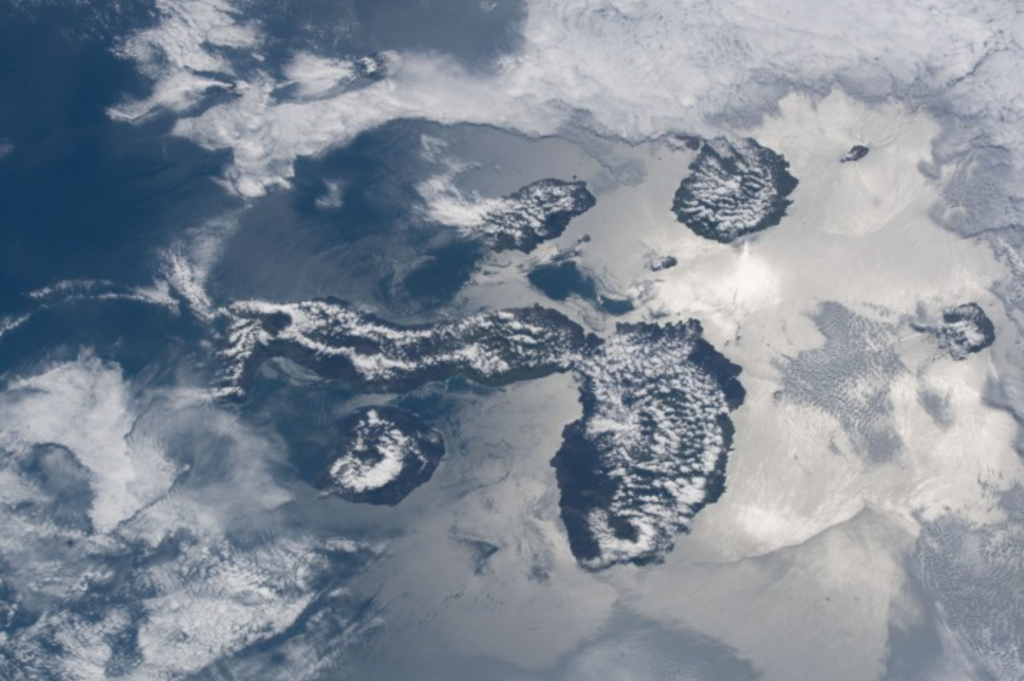
The Galapagos Islands have a unique geographical location at the confluence of three ocean currents which gives it one of the richest marine ecosystems in the world.
The ongoing volcanic activity and extreme isolation of the Galapagos islands led to the development of unusual plant and animal life – such as giant tortoises, marine iguanas, and many species of birds.
The Galapagos Islands have grown famous for their magnificent beauty and in 1978 were named a UNESCO World Heritage site.
How to visit the Galápagos Islands: Land or Sea?
Check the latest Galapagos travel requirements here.
Basically, there are 2 ways to explore the Galapagos Islands: Do you prefer to stay on a boat which provides accommodations and transportation from island to island, or do you want to stay in a hotel on one of the islands and explore the other islands via day-trips?
There are many options for a boat trip, such as all-inclusive cruises like Celebrity or, if you are a diver, consider live-aboard boats such as Galapagos Sky, Galapagos Master, and Nortada for under water adventures.
The advantages of a boat trip is it’s easier and time-saving to access each island as the boats or cruise ships navigate during the night and you can wake up in a new island each day. The boat trips are the pricier option and due to the Pandemic, many travelers may be weary of cruising.
For land tours, nowadays you can book different types of hotels from budget to luxury categories on San Cristobal and Santa Cruz islands (there are less accommodation options on other islands like Isabela and Floreana). The most efficient way is to book a hotel that is located near the harbor (not in the highlands) so you can be close to the boat’s boarding for day trips.
Many operators offer cruises or land tours. Here are the top 10 islands activities tours offered by Viator, including this 6-Day Galapagos Island Hopping Budget.
When to visit the Galápagos Islands?
The Galapagos islands are wonderful to visit at any time in the year.
January through May period is warmer and rainier, with March and April being the hottest and wettest months. The blue sky seems more luminous between showers, which is great for photography.
June through December are the drier and cooler months with chances of light rain. The sky may be cloudy especially in December. The water is cooler and you may need a wet suit while snorkeling (which may be provided by the tour operators). The advantage is the abundance of planktons brought by the cold current which attract hungry marine life.
What to Pack for the Galápagos Islands
It’s best to be prepared and pack the essentials as shopping is limited and expensive in the Galapagos, although you can get basic supplies from small shops in San Cristobal and Santa Cruz islands.
- Hiking shoes in case you plan to visit the volcanic area in Isabela island.
- Flip-flops or sandals to wear on boat, in the beach and in town.
- Reef-safe high-SPF sunscreen as Ecuador is on the equator where the sun rays are strongest. It’s important to use reef-safe type to protect the corals and marine life.
- Wide-brim hat for sun protection during land excursions.
- A rash guard for sun protection during snorkeling.. I was never particularly pestered by insects in the Galápagos at any time of year, but it can happen.
- Natural insect repellent like this one.
- If you plan to do a lot of snorkeling, consider to bring your fins, mask and snorkel. The equipment is generally provided but the quality and cleanliness may vary.
- Rain gear and water resistant case for your camera as you’ll travel a lot on boats, and due to the unpredictable weather.
- A refillable water bottle to replenish when necessary to limit wastage and pollution.
- Your prescription medication and any emergency medicine for sea sickness, allergy, digestion problems, just in case.
- Emergency cash for small purchases and tips, although there are ATMs on Santa Cruz and San Cristobal islands. Most hotels and restaurants accept credit cards. US dollar is the official currency in Ecuador.
How to get to the Galápagos Islands
You can fly to Quito or Guayaquil on mainland Ecuador and from there, take one of the daily flights to either one of the 2 airports in the Galápagos Islands, Baltra and San Cristobal.
If you have never traveled to Ecuador, we would recommend Quito as it offers a variety of accommodation options, museums, restaurants and a great colonial center which was made a UNESCO World Heritage site in 1978. Guayaquil, the largest city in Ecuador, is a sea level whereas Quito is at high altitude, 9000 feet (2800 meters) so keep that in mind if you plan to scuba dive in Galapagos Islands and fly back to the mainland, as high altitude and diving don’t mix.
Our Galapagos Trip
After researching and making a list of our priorities (on top of my wish list is to visit and swim with the giant tortoises), we opt for an island hopping land tour to allow for more leisurely time visiting the Giant Tortoises and full day hiking. We choose the Red Mangrove eco-tour, and it has truly exceeded our expectations.
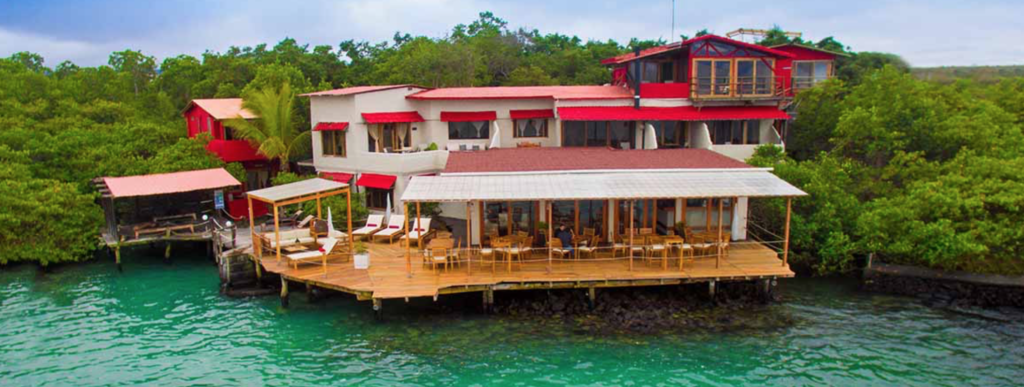
Santa Cruz
Arriving on Baltra Island from a flight off Quito in January, we hop on a bus for a short trip to the Itabaca Channel. Here we take a short ferry ride across the channel to Santa Cruz Island. From there, we take a bus ride to Puerto Ayoro to check in at the Red Mangrove.
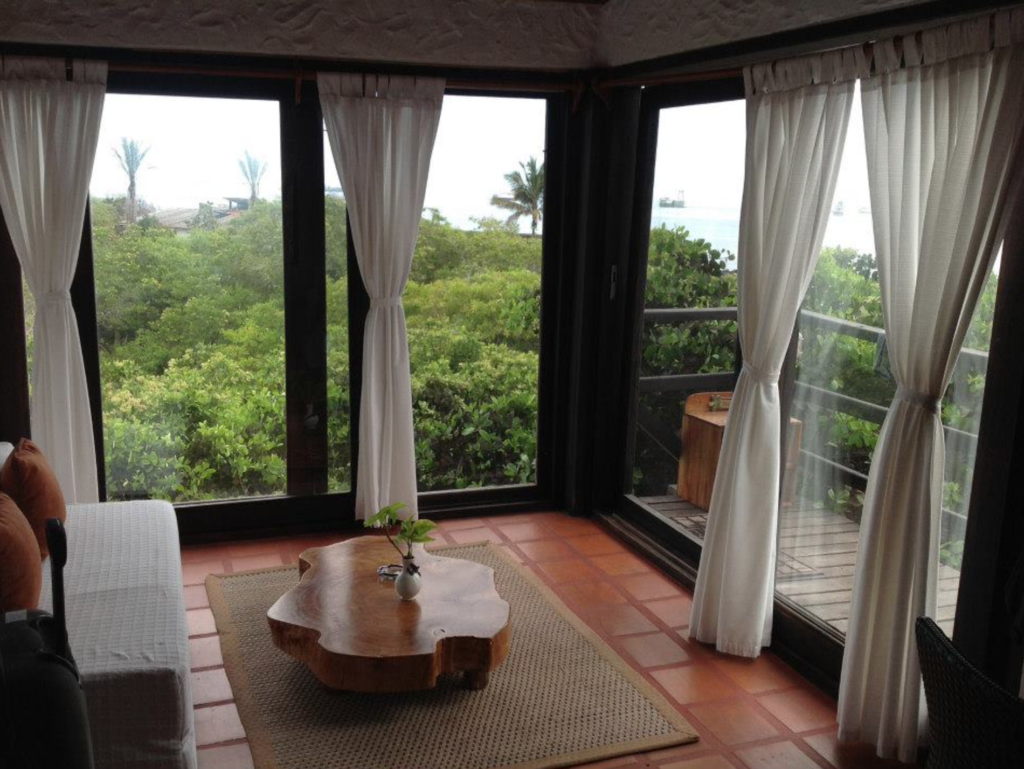
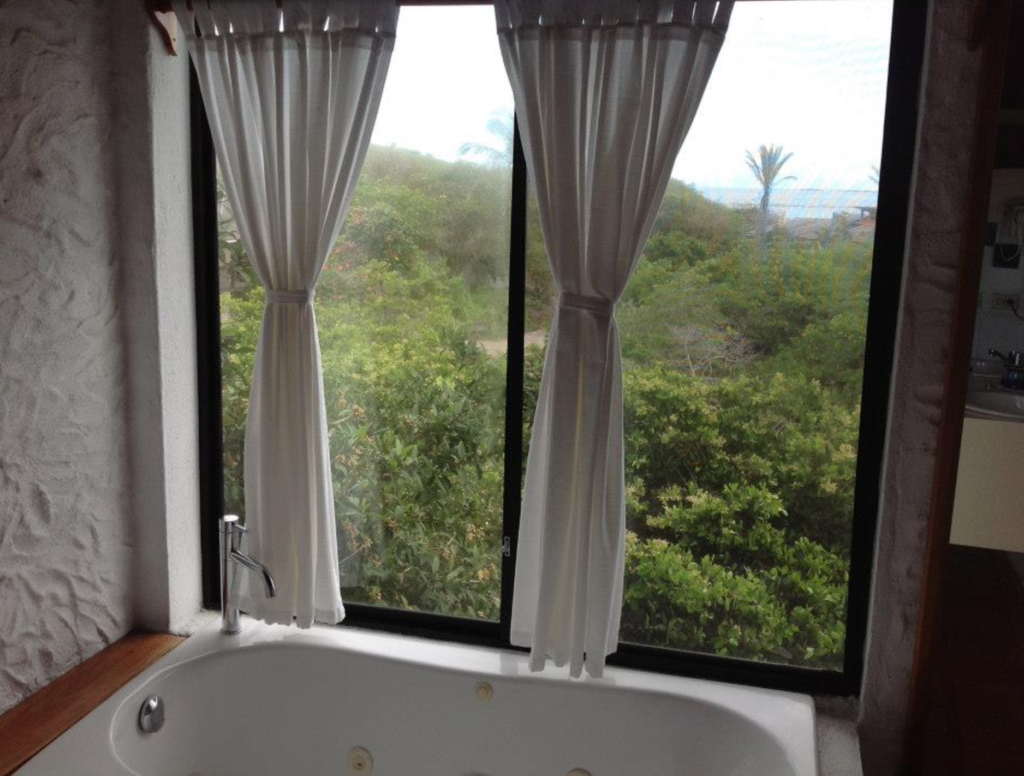
The Red Mangrove is a serene haven, with balcony and full ocean view, even from the bathtub… Perfect relaxation after a full day’s activities
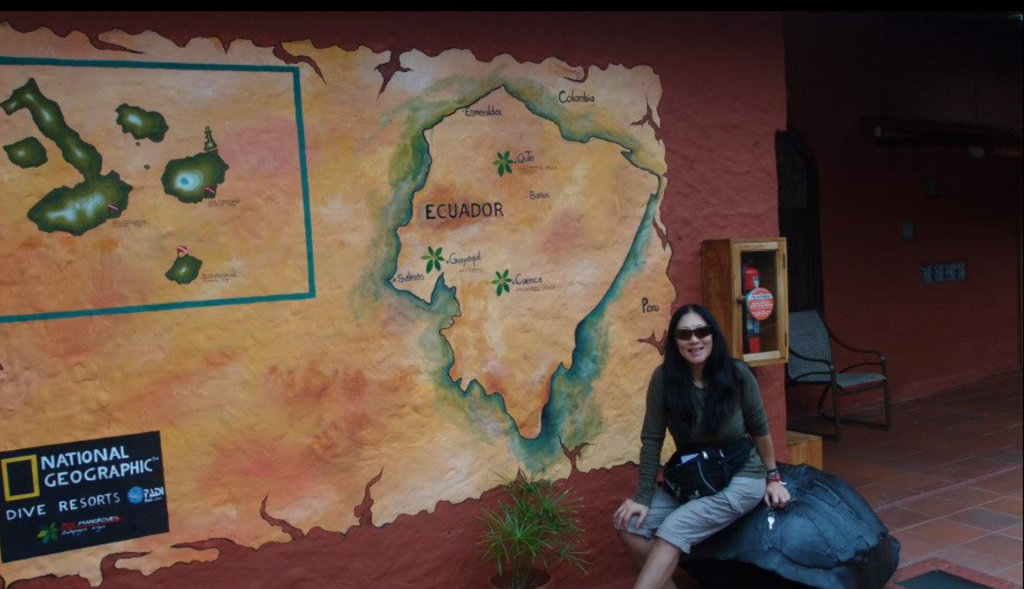
Our dream destination coming true, we have a leisurely lunch on the terrace overlooking the ocean, our companions are iguanas and sea lions lounging around…
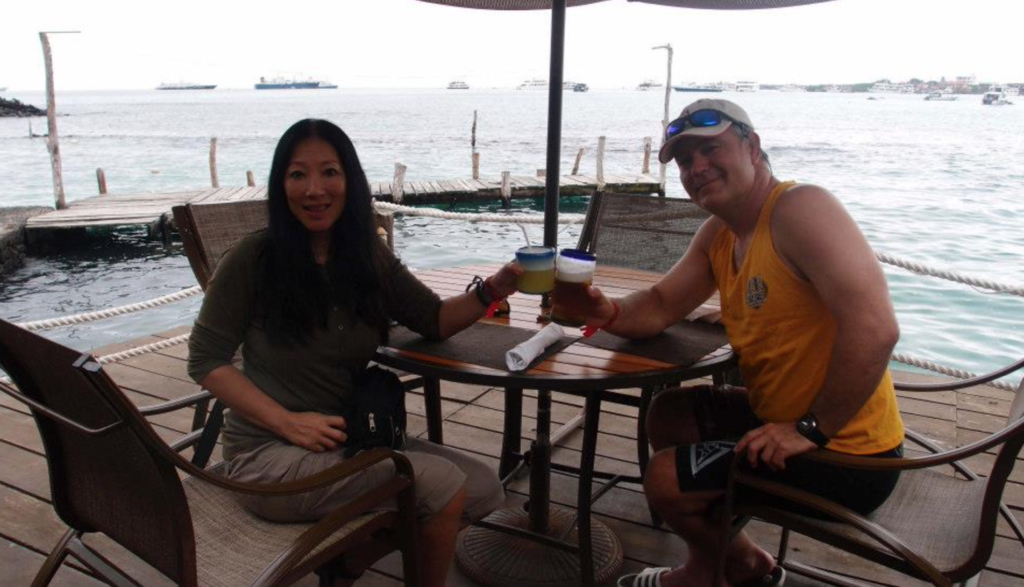
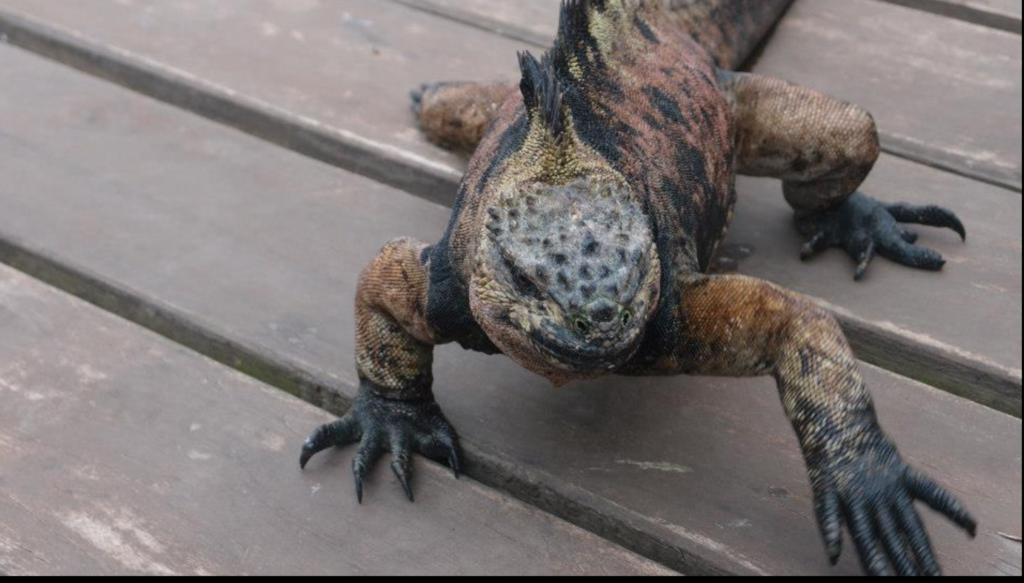
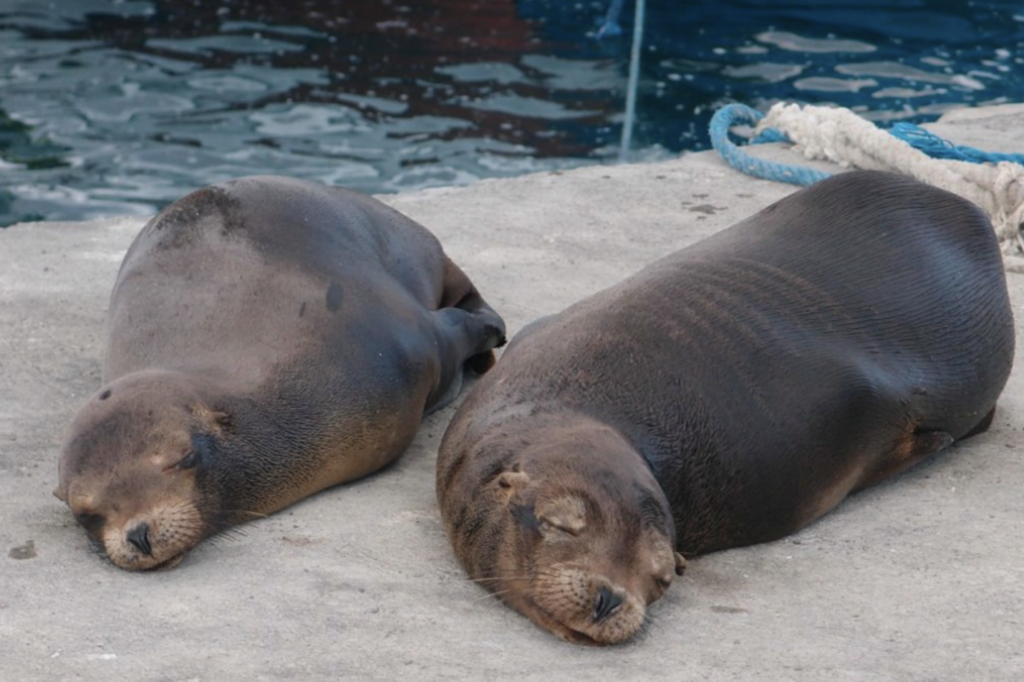
Tortuga Beach is a mile-long silky-sand shore with gently-breaking surf which is sure to bring a sense of relaxation and wellbeing. We walk bare foot on the warm sand, in the company of marine iguanas.
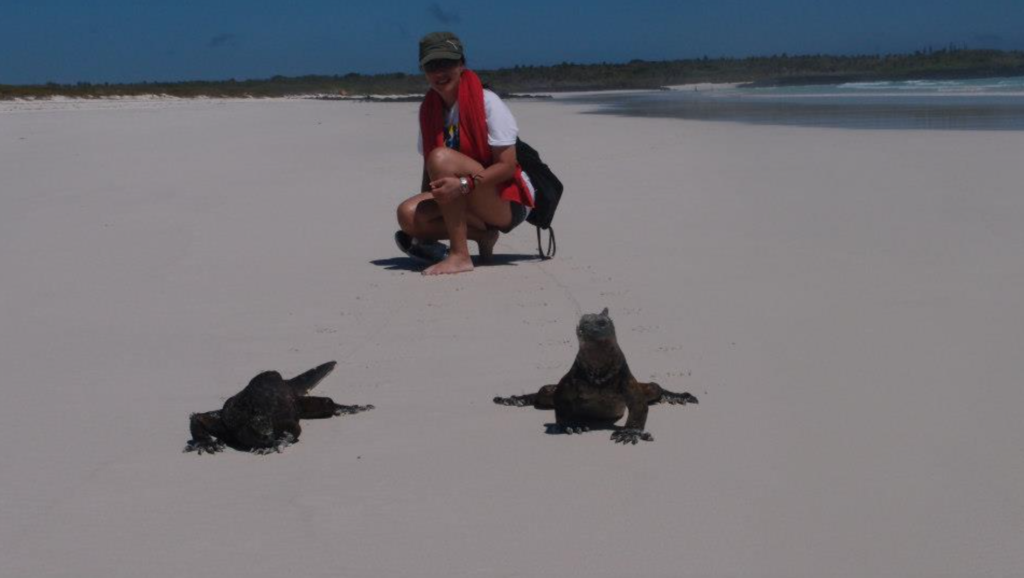
The next day we go scuba-diving. The Galapagos are considered as one of the best diving spots in the world with rich marine life like hammer-head sharks (and many other shark species), yellow-bellied sea snakes, Sea lions, dolphins and sea turtles to name a few…
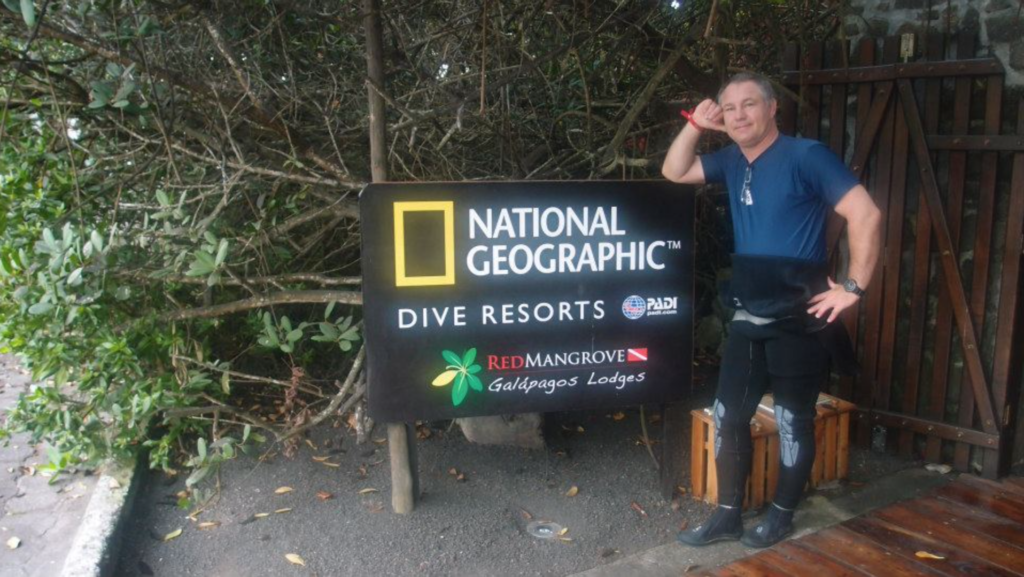
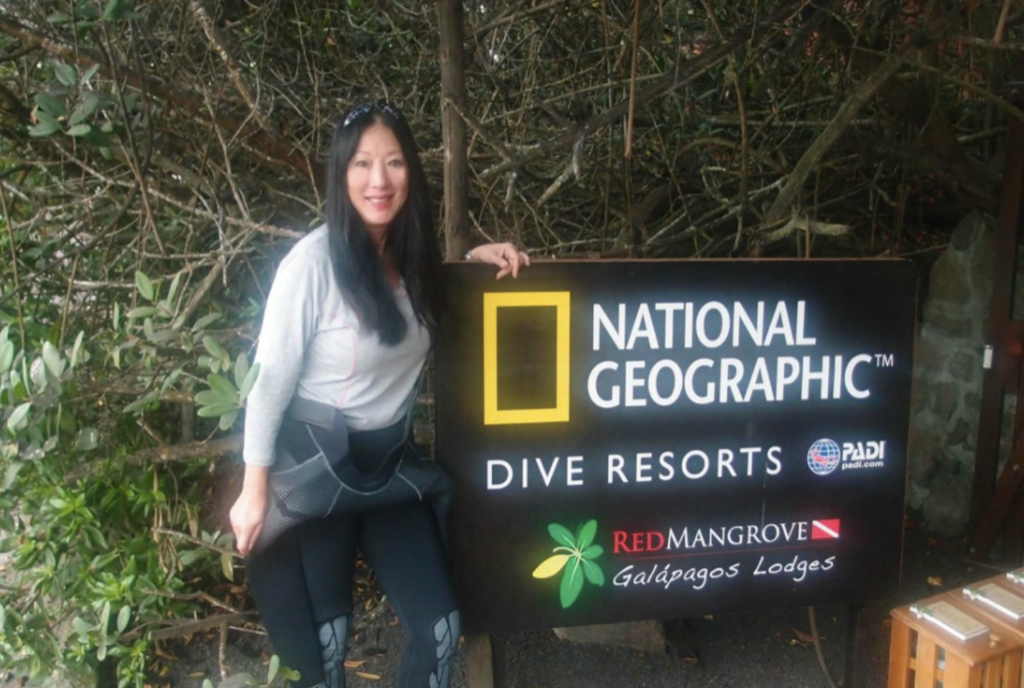
Unfortunately, on that day the currents are strong the dive visibility is very low. The gorgeous weather and beautiful scenery still make the outing enjoyable.
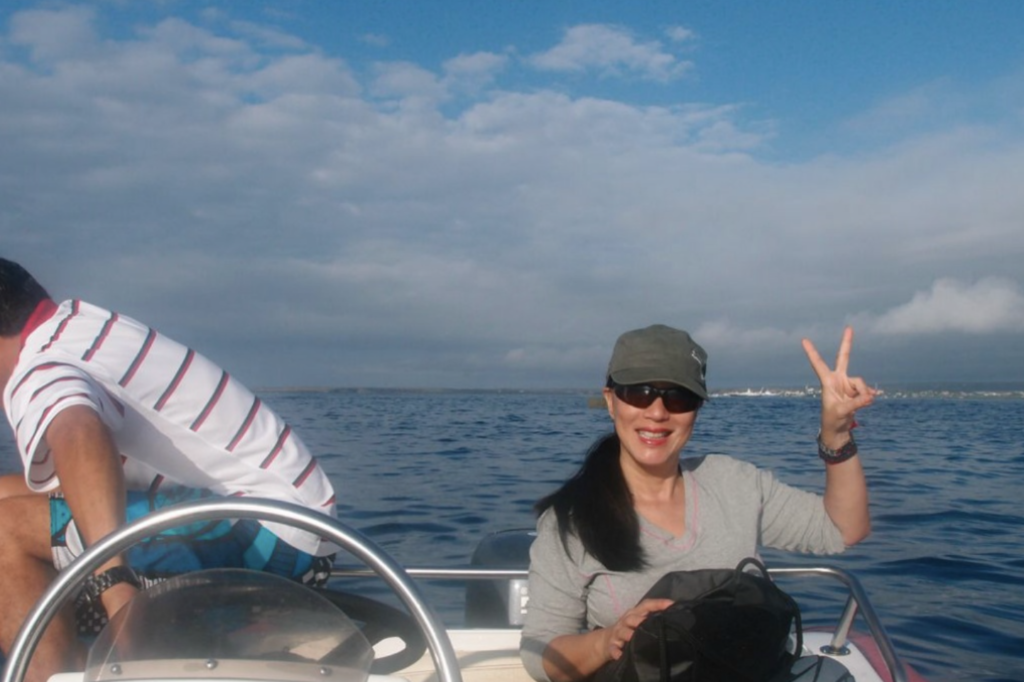
After the dive, we head back to Puerto Ayora, and take a stroll before enjoying dinner at the lodge and attending a brief orientation meeting.
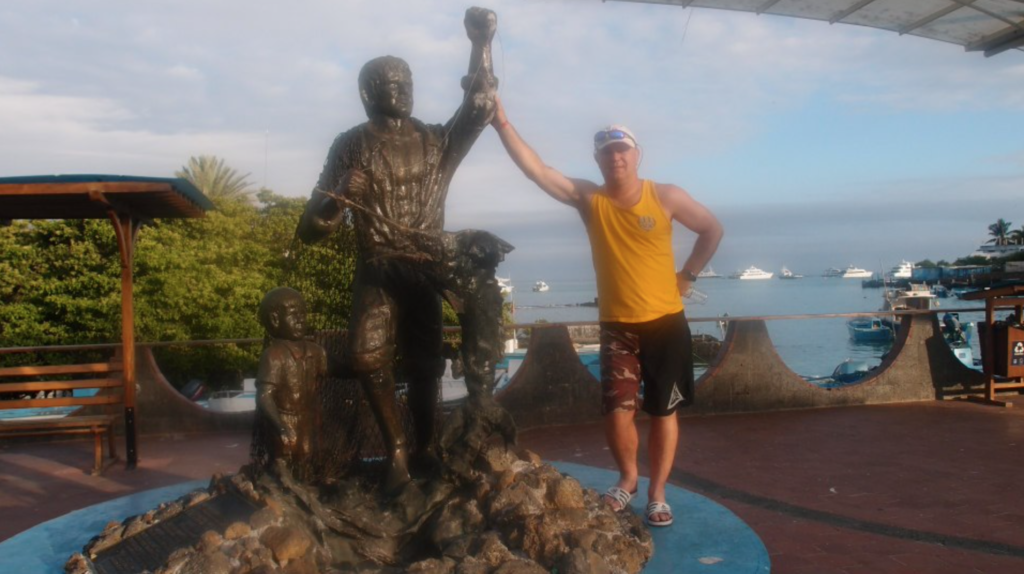
The Red Mangrove has a friendly casual restaurant.
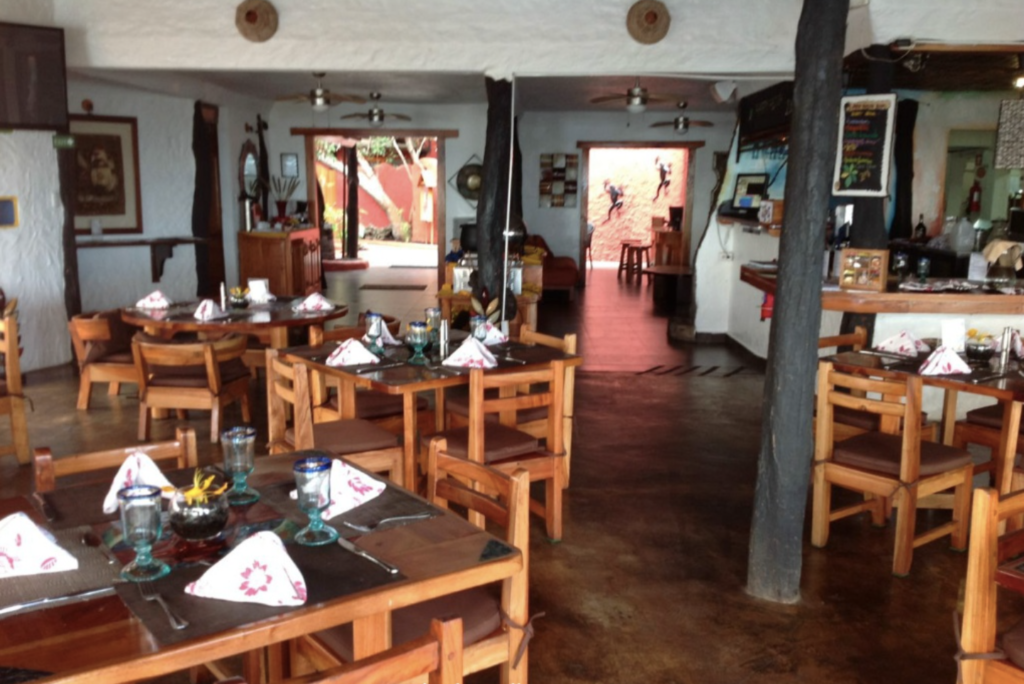
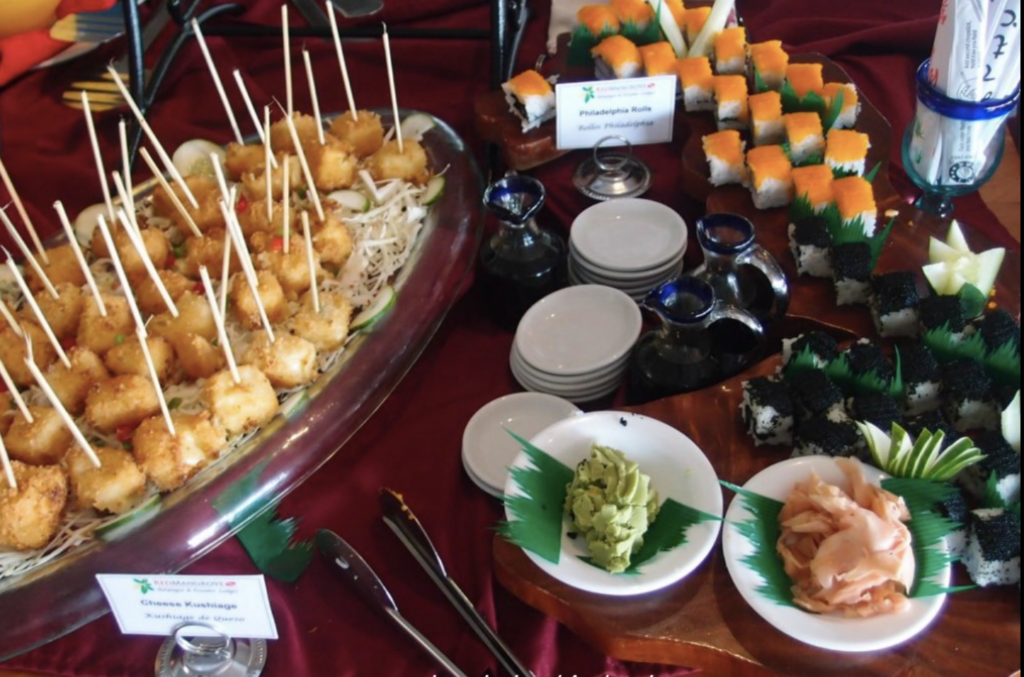

Santa Cruz – Floreana
This morning, after a hearty breakfast, we head to “Los Gemelos”(The Twins). These two large lava chambers are the result of collapsing volcanoes whose tops caved in during the cooling process leaving us with an impressive geological feature in the Santa Cruz hills. We explore the diverse plant and animal life as we hike through the area.

To satisfy some curiosity of the underworld, we next head descend into a 1350-feet long (450 meter) lava tunnel, lighted along the way. Inside this cavernous shaft we are met with multi-colored walls of mineral
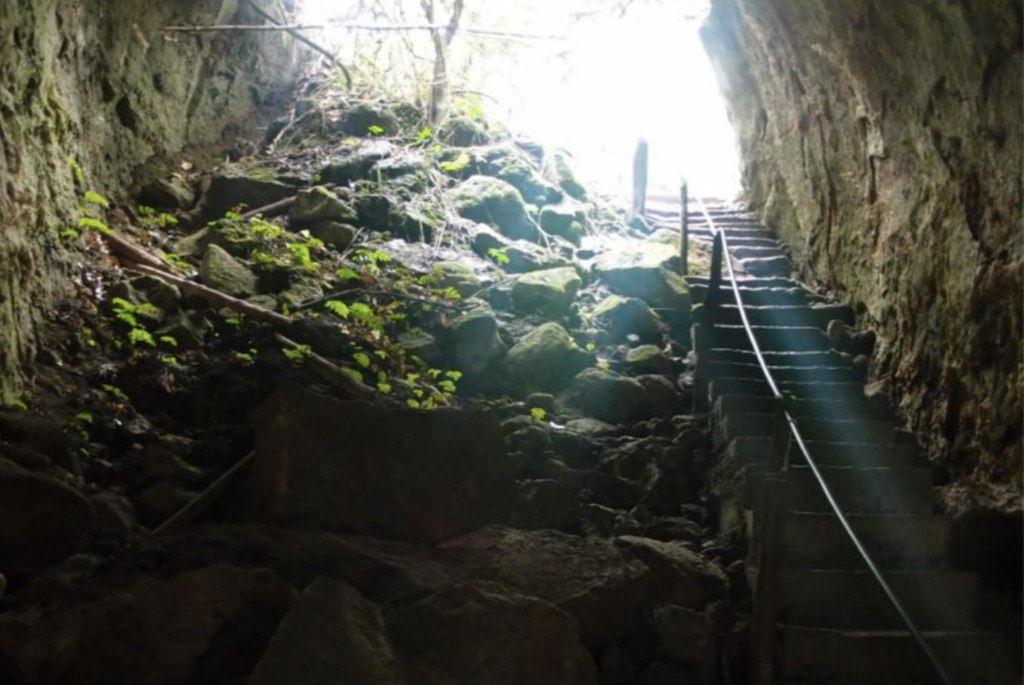
composites, stalagmites and stalactites protruding the often smooth surfaces and concert hall ceilings looming above. After an eventful morning we return to the lodge for lunch.
After this walk, a bus takes us to visit the impressive, large and iconic Galapagos tortoises, residing on 600 acres of the National Park Reserve. We will throw on a pair of mud boots before heading out into this natural habitat where we can experience the life of these giants first hand.
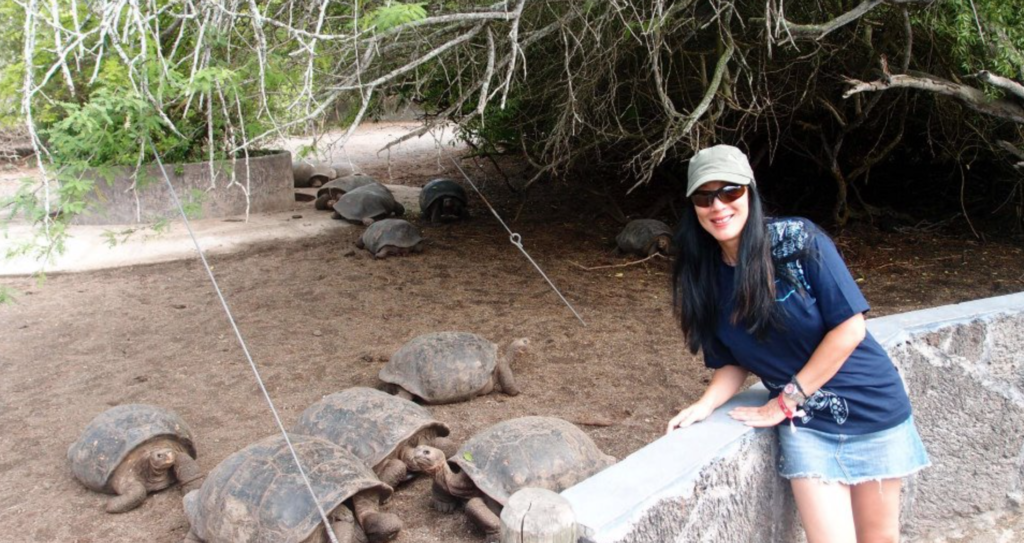
The reserve provides the perfect habitat and this, coupled with the tortoise’s slow movement, allows us to get an up close and personal interaction not possible anywhere else in the world.

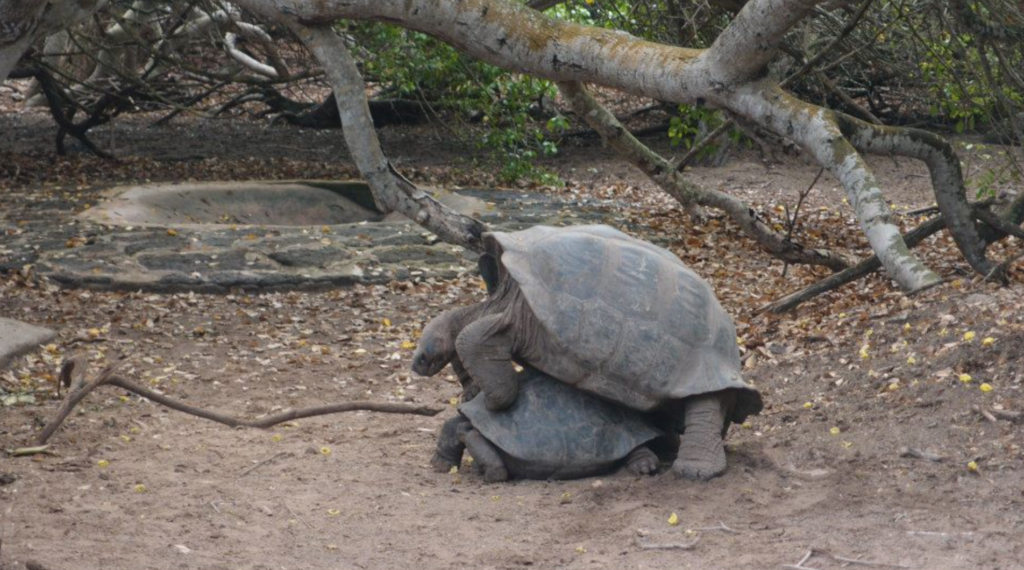
Next we board our boat to cruise to the next island, Floreana. Arriving roughly two hours later, we continue to Black Beach. This impressive site is an ideal place to capture the beauty of the Galapagos Islands with our eyes, hearts and cameras. There’s time to swim, snorkel and watch the sunset over the horizon.
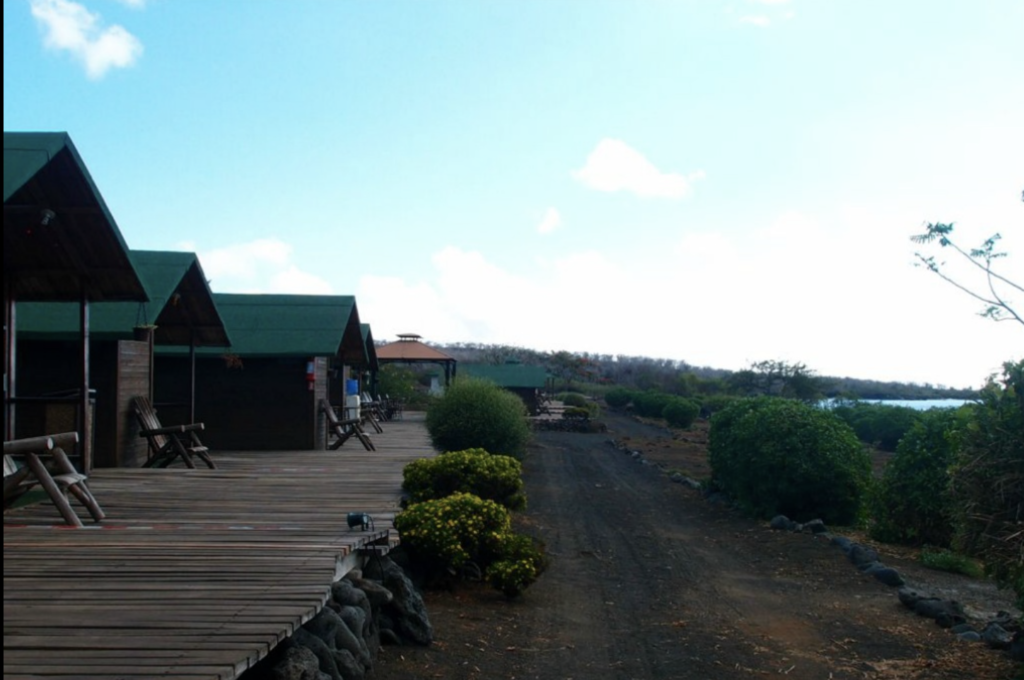
We check into our quaint and cozy cabins built just above the beach and enjoy an evening drink before heading to a small restaurant run by a local family. We enjoy a home-cooked meal and have a chance to visit with the owners who descend from some of the original European settlers of Floreana Island.
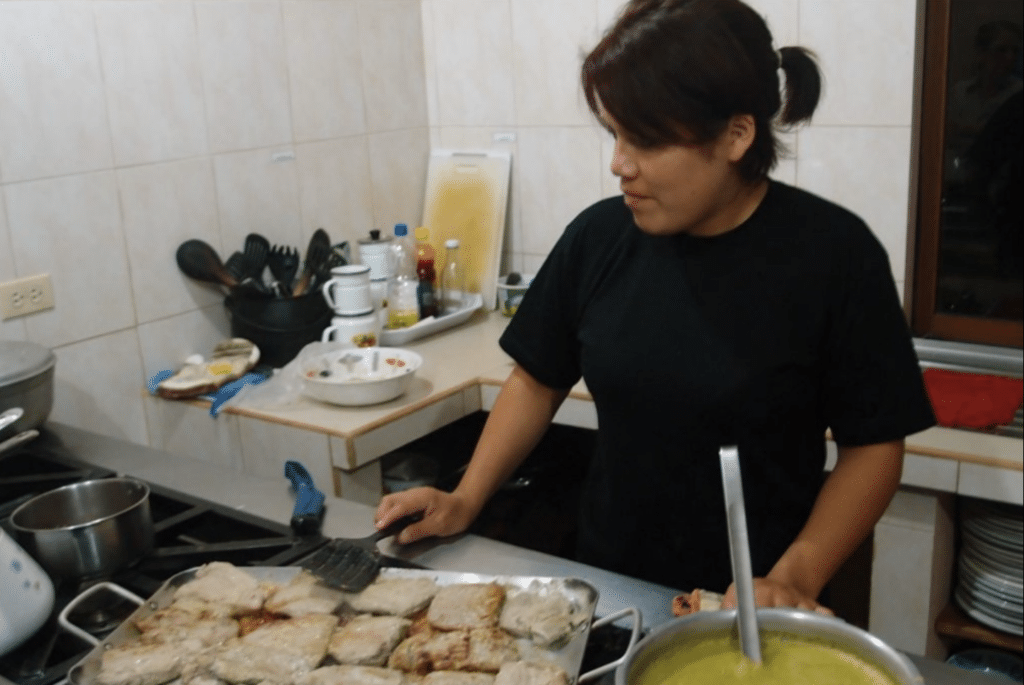
After dinner a short drive or quiet walk under the stars returns us to the lodge.
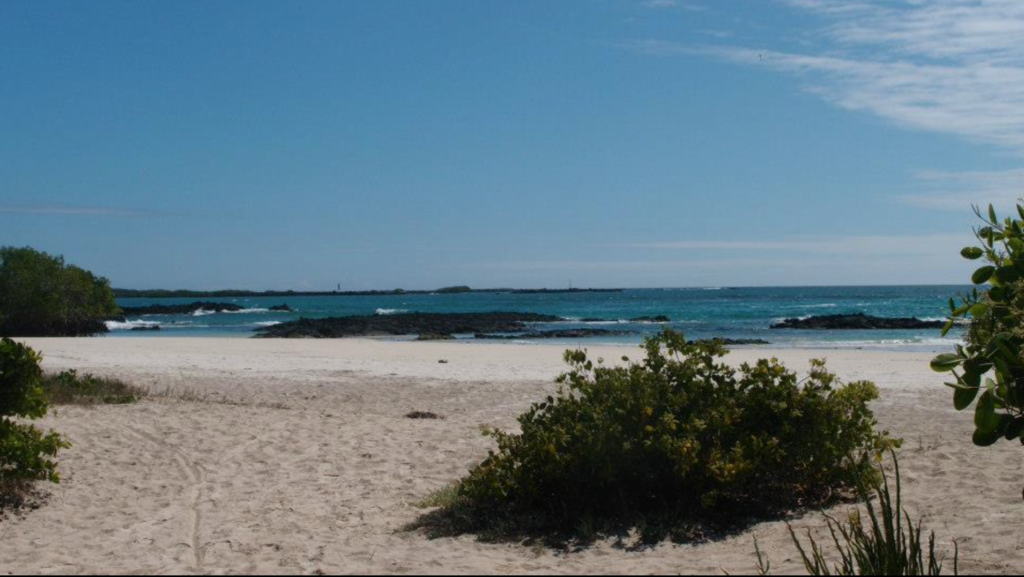
Floreana – Isabela
Floreana has a colorful human history and the hosts at the restaurant descend from the first immigrants to this island. At breakfast, visiting with them provides a unique cultural opportunity to hear a local’s perspective and appreciation for the Galapagos. Soon after breakfast we load up into a “chiva” which is a truck with a covered flat bed with benches. A bumpy 20-minute ride takes us to Cerro Allieri, one of the islands tallest points at 1100 feet (340 meters) above sea level. As we hike around, new and stunning landscapes are revealed to us along with copious vegetation species, which is one of the areas main attractions.
Back in town we enjoy another meal with a local family and head out for a walk to La Loberia, one of Floreana’s most treasured and breathtaking secrets. Here we swim and snorkel.
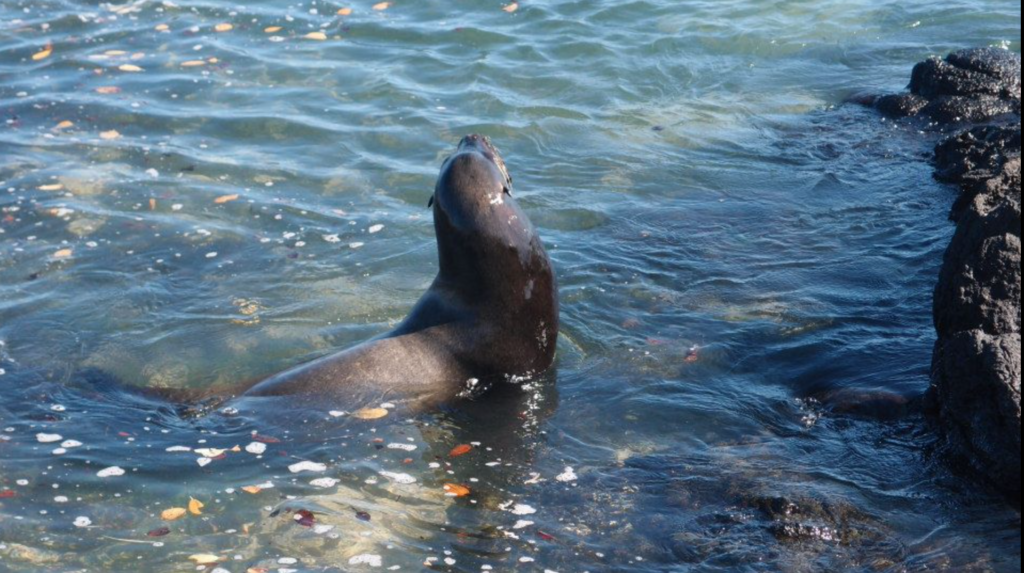
I’m in heaven, swimming and snorkeling among curious sea turtles and playful sea lions…
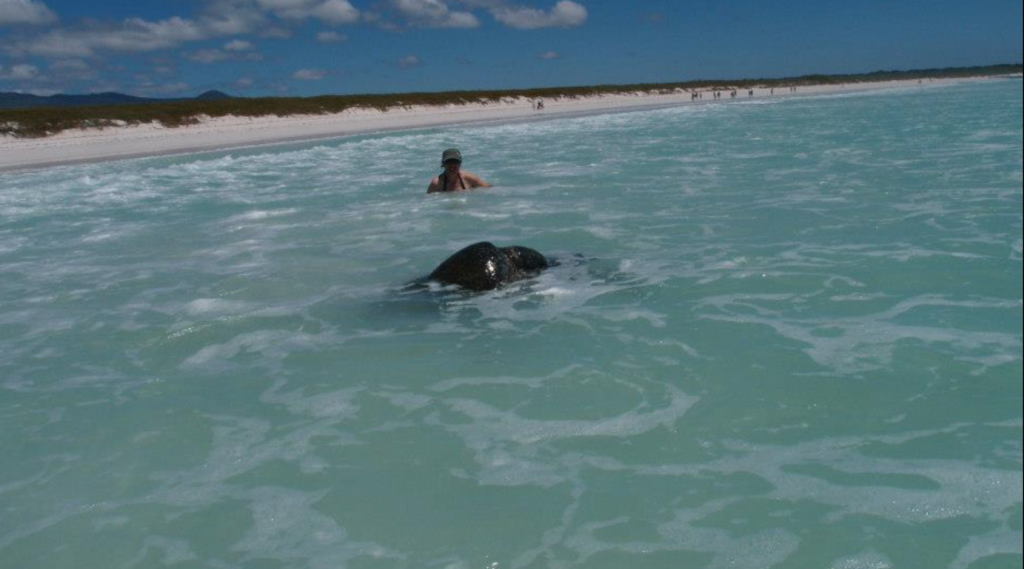
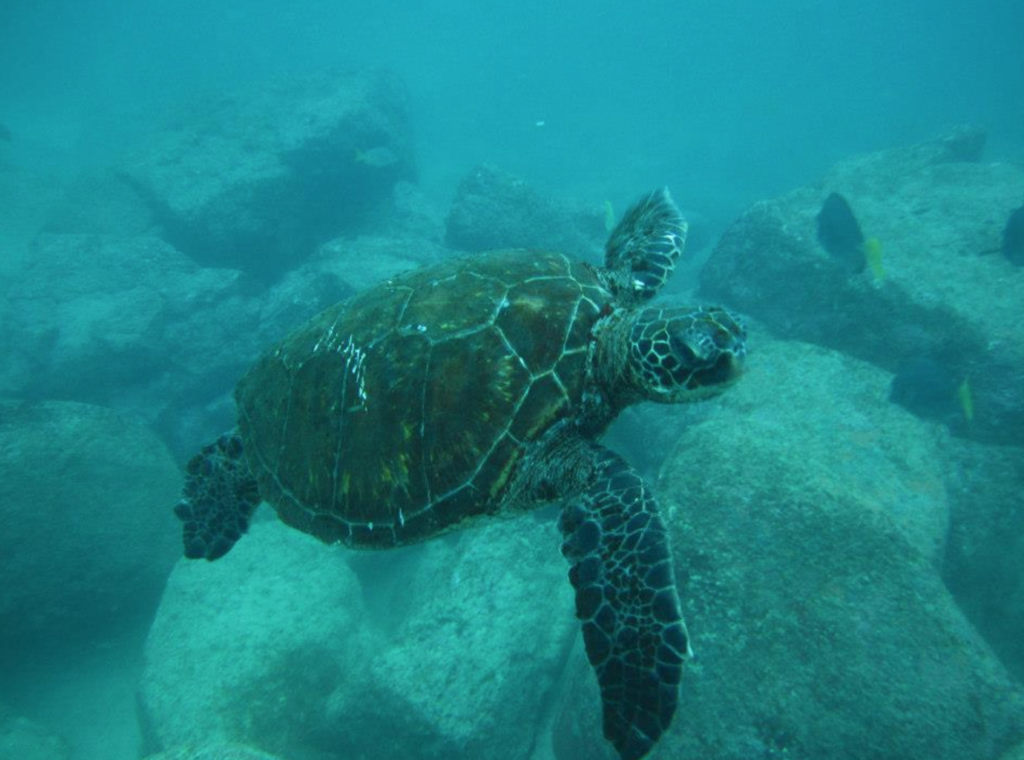
Due to the wide variety of plant life, many finches including Darwin finches and the medium tree finch, also critically endangered, can be found here.
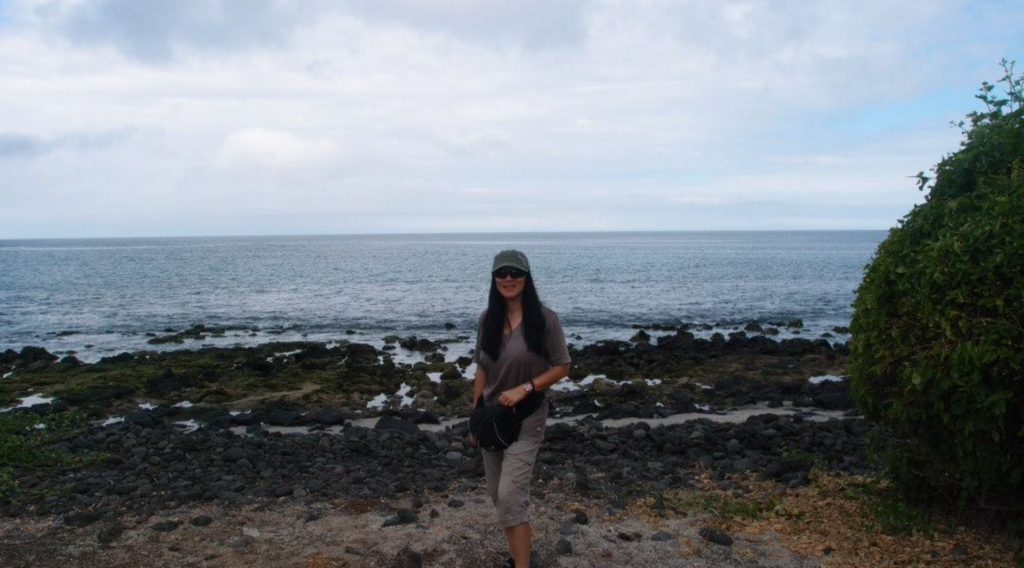
There’s time to explore the quaint town of Puerto Velasco Ibarra before we have dinner at the local restaurant.
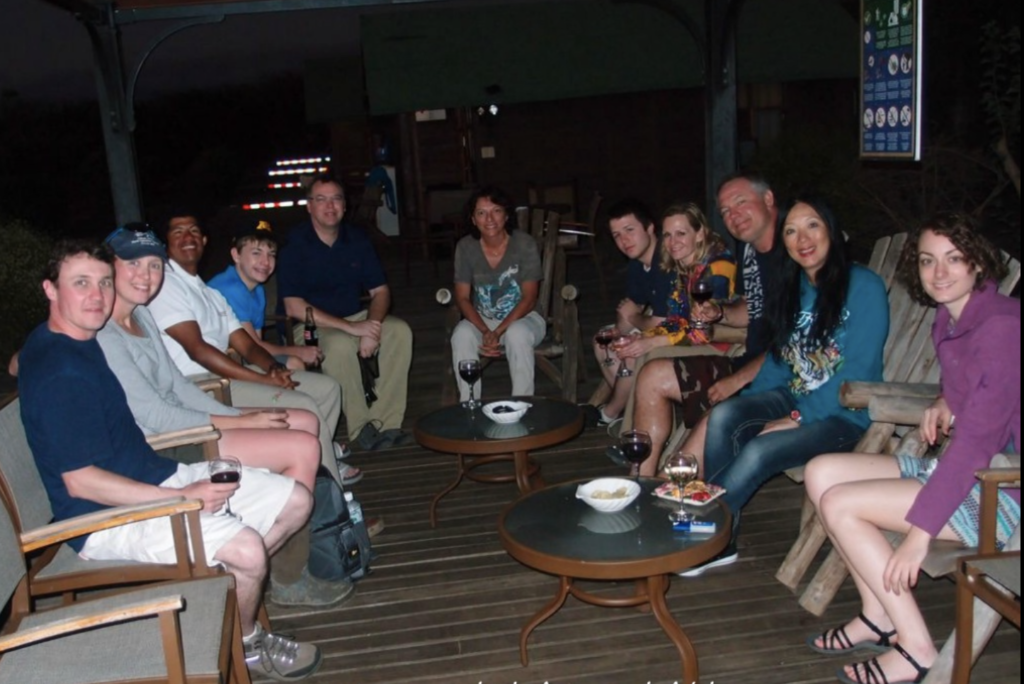
Isabela
We enjoy our morning meal before hopping in a Chiva (traditional open-air bus) that takes us up into the highlands.
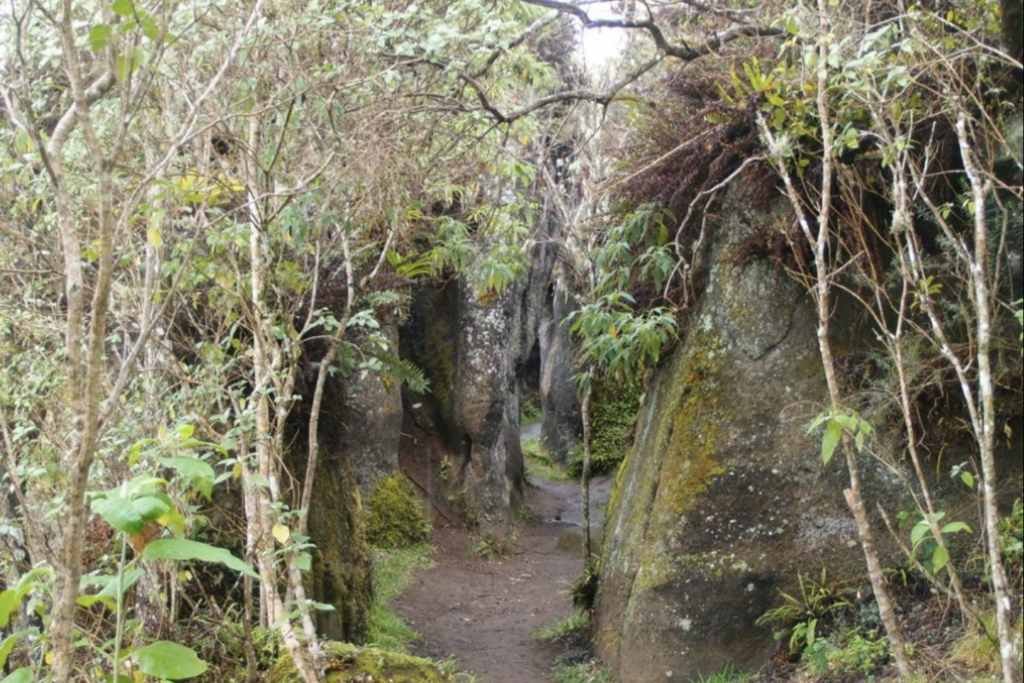
Along the way we learn about the island’s history and surrounding wilderness. Our guide is regaling us with stories about the “Floreana Mystery,” it’s pretty exciting since I’ve read about it long ago, and have never imagined that I would one day visit the scene of the crime.
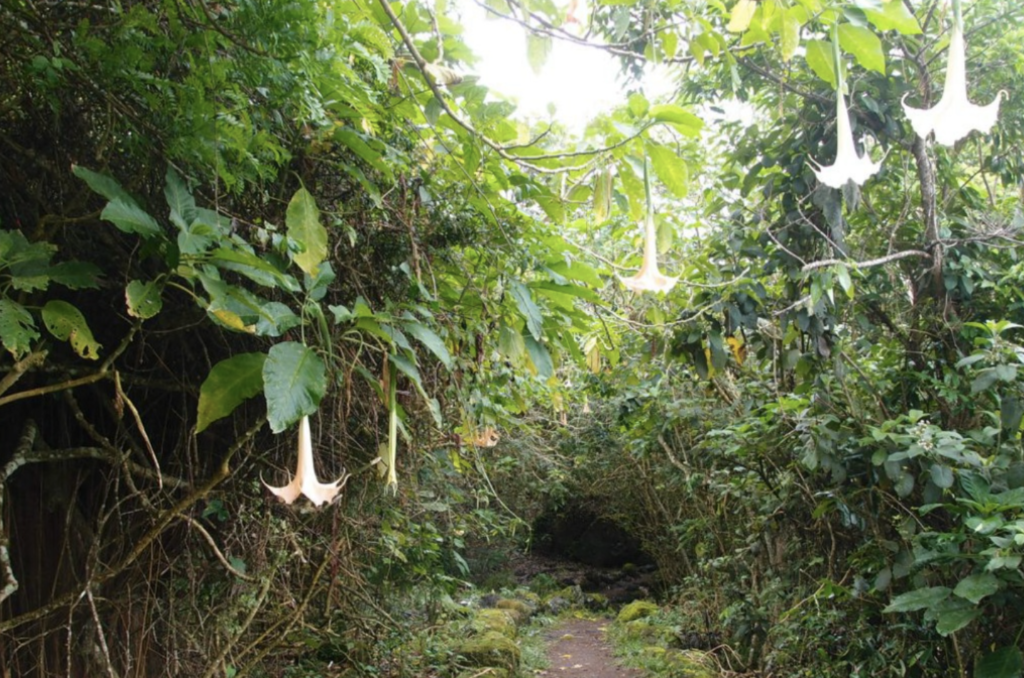
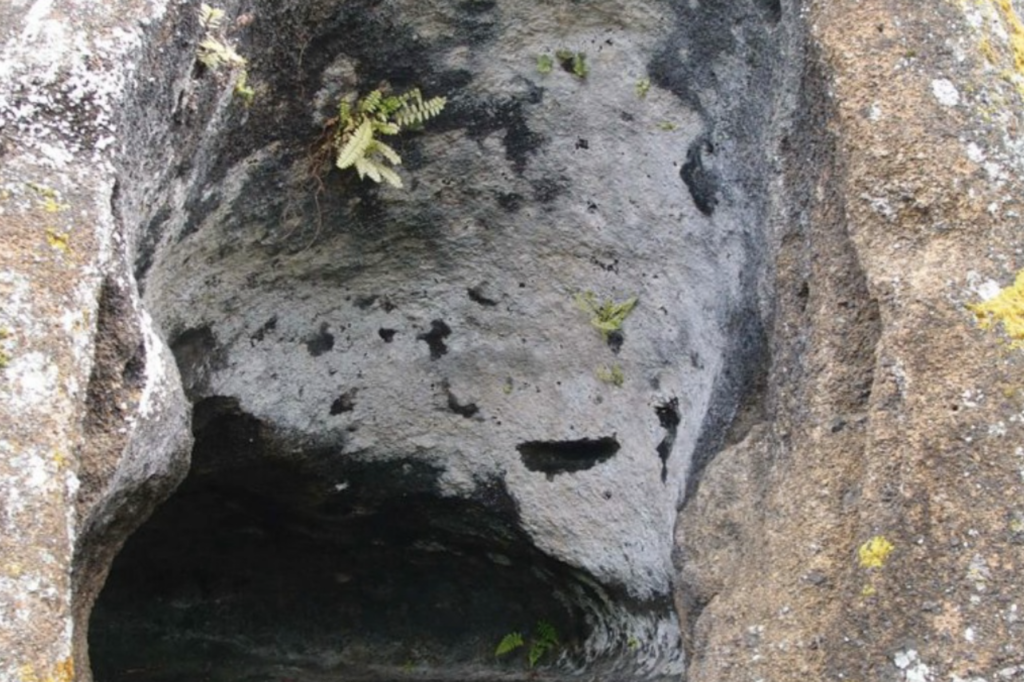
The 40-minute ride brings us to Asilo de la Paz (Peace Asylum), surrounded by farm land. We explore a pirate cave, where the first humans on the island lived and a slowly dripping creek which supplies the whole island with potable water.
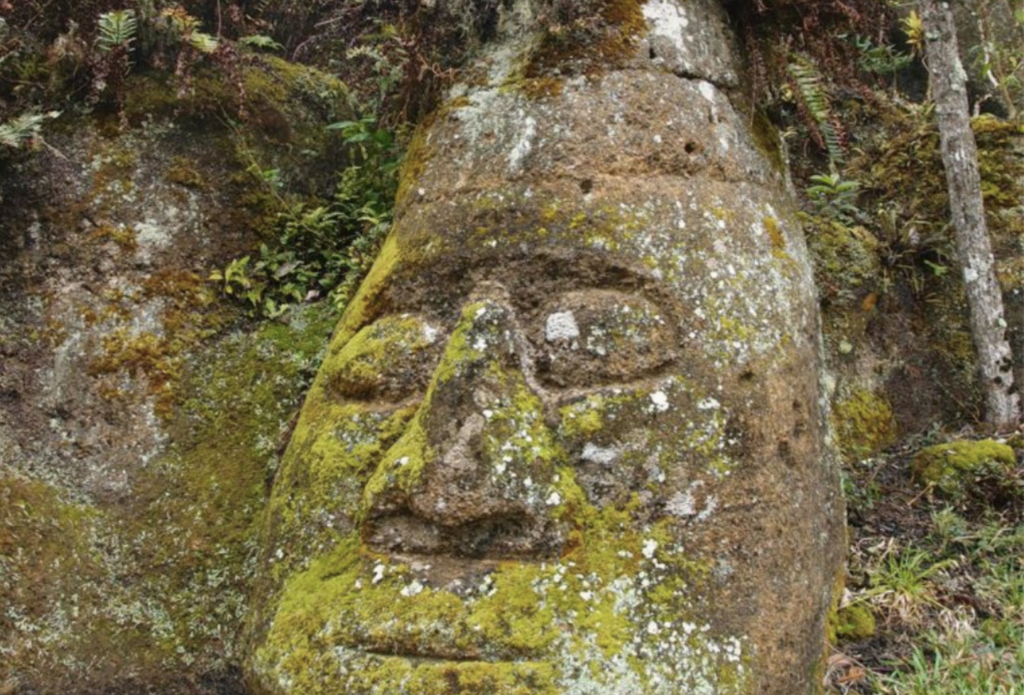
We get the chance to see a variety of tortoise species from the various islands at the island’s research center, created specifically to protect and encourage these gentle creatures. A bumpy ride in our Chiva takes us back to the coast.
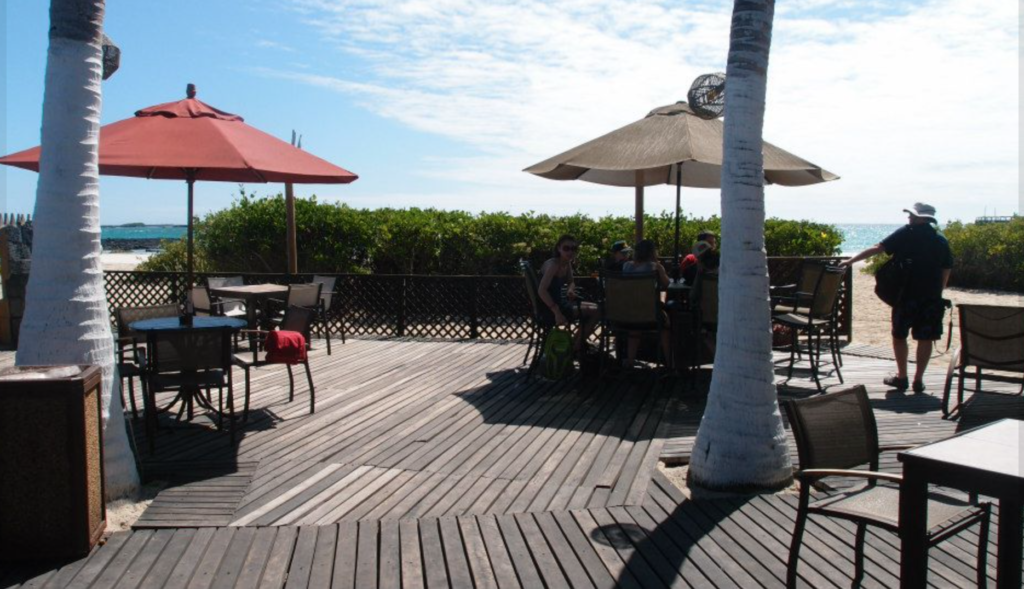
We board the boat once again to head to our next adventure on the island of Isabela. Around two hours later, we dock, check into the Red Mangrove Lodge and enjoy a delectable lunch.
We go by boat to visit Las Tintoreras island, full of land and marine life, blue-footed boobies, penguins, seal lions, tortoises, sharks, iguanas. The landscape is striking, black lava rock against azur blue water and green mangroves…
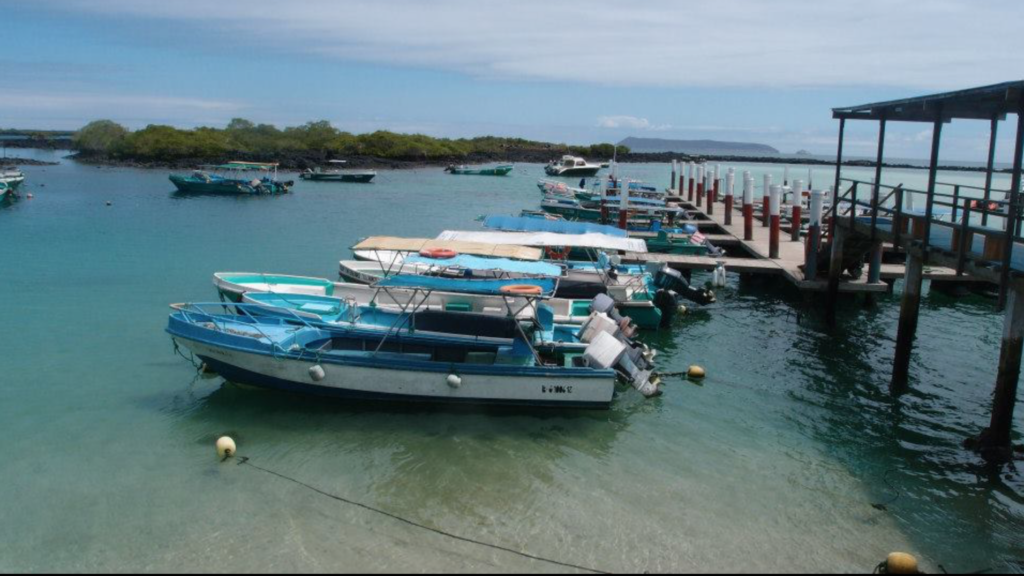
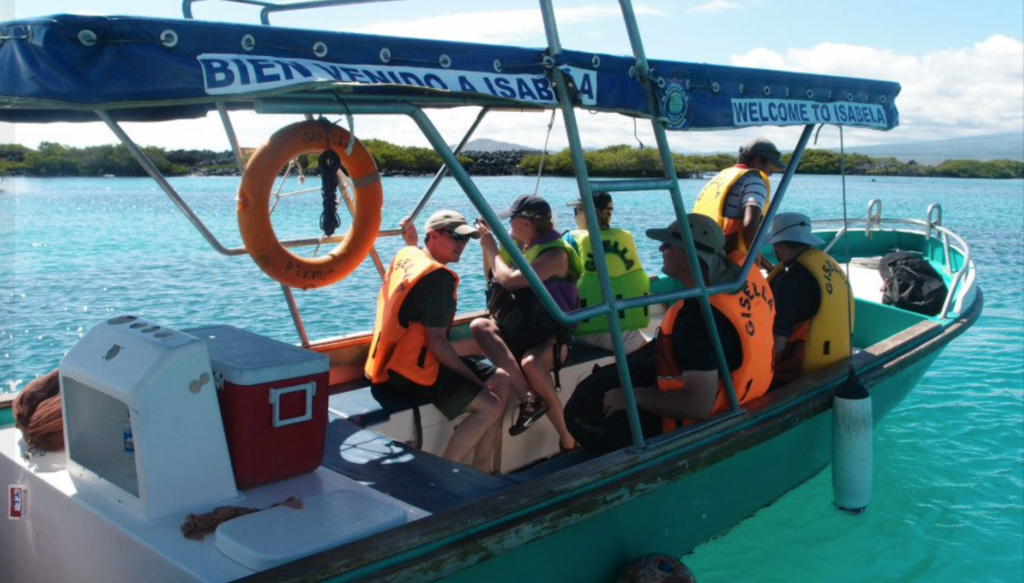
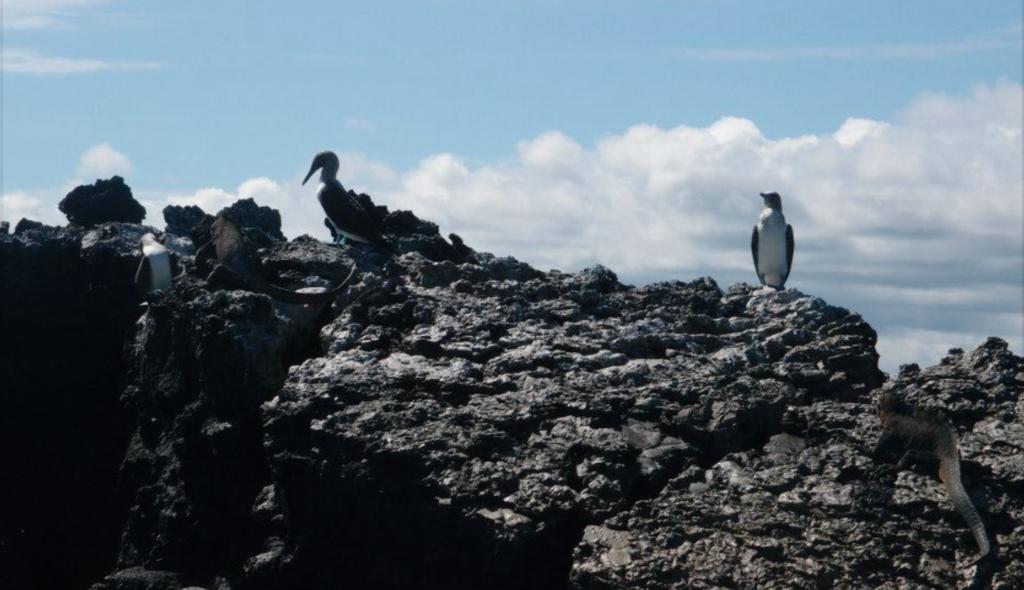
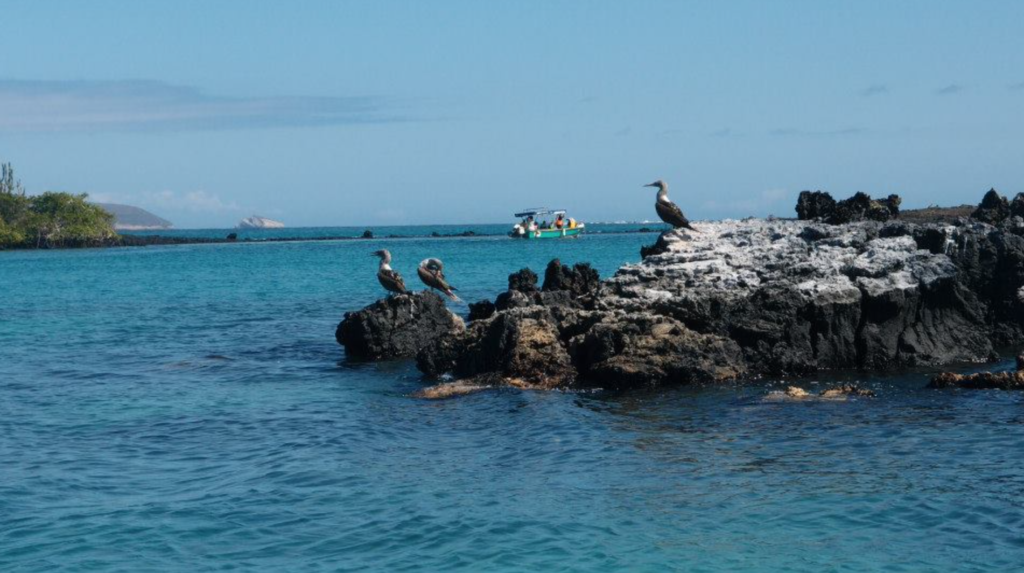
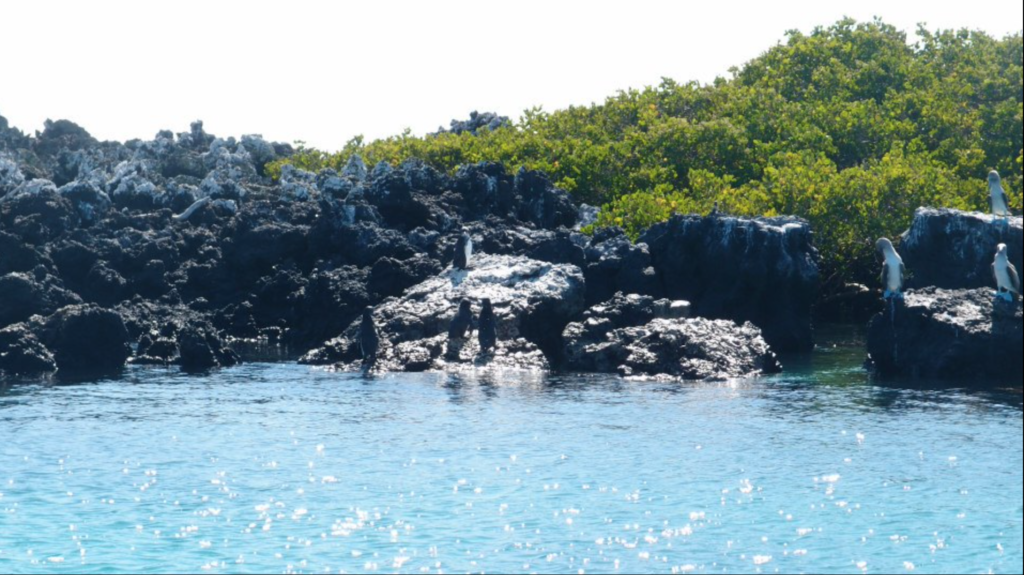
“Las Tintoreras” is a striking location, with sharp black volcanic terrain offset by deep blue waters and luscious green mangroves. We follow a well-defined path at this official Galapagos National Park site that weaves its way through the twisted and austere volcanic landscape. An abundance of marine iguanas live here along with sea lions and various shore birds. We peer down into a narrow and protected channel where white- tipped reef sharks bask, just 10 feet from our eyes.
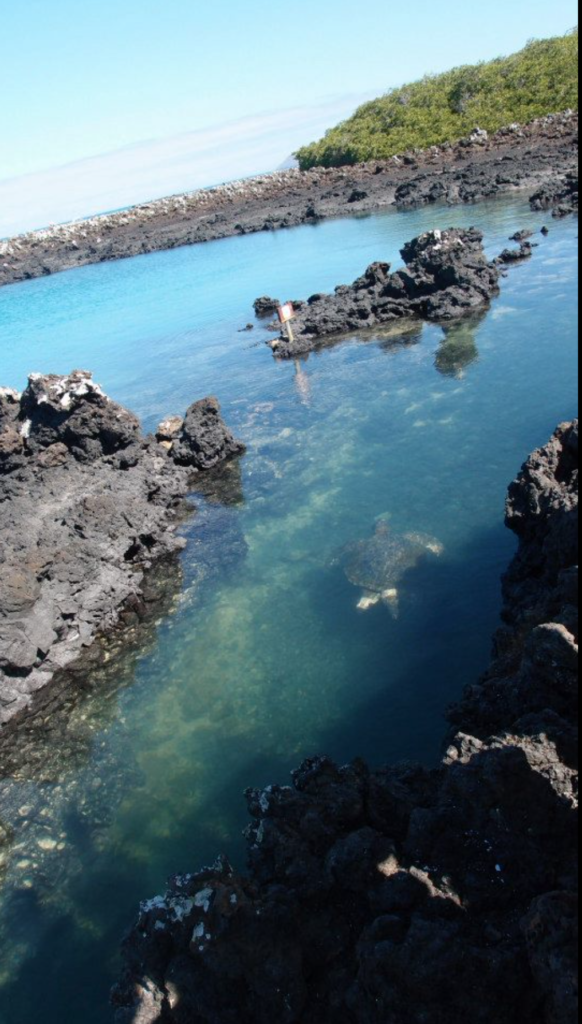
Looking up we enjoy a dramatic view of Isabela’s volcanoes rising into the sky. After the walk, we return to our small boat and travel a few minutes to a place to snorkel. This is an opportunity to see the white-tipped reef sharks from a different angle, play with young sea lions and iguanas.
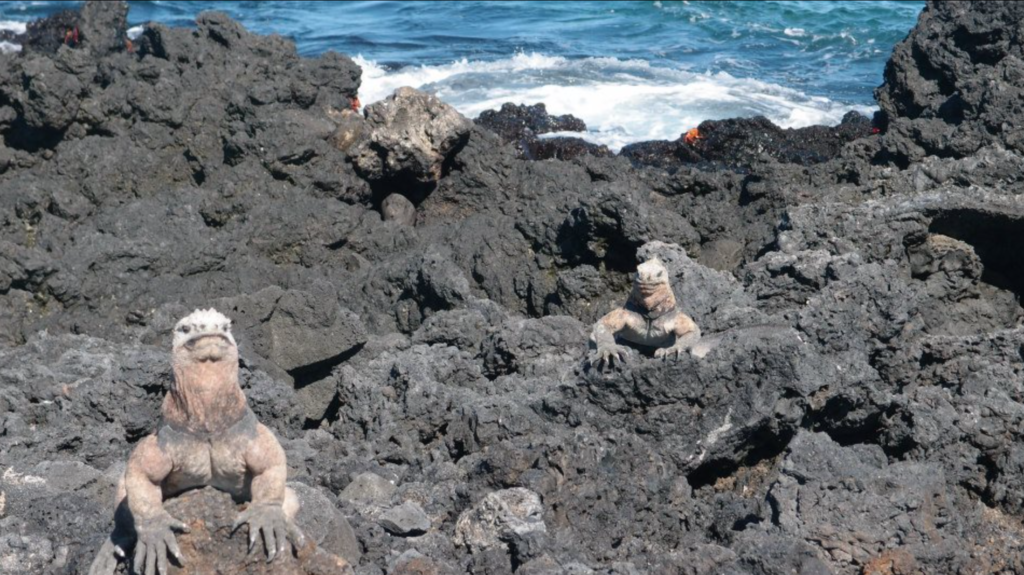

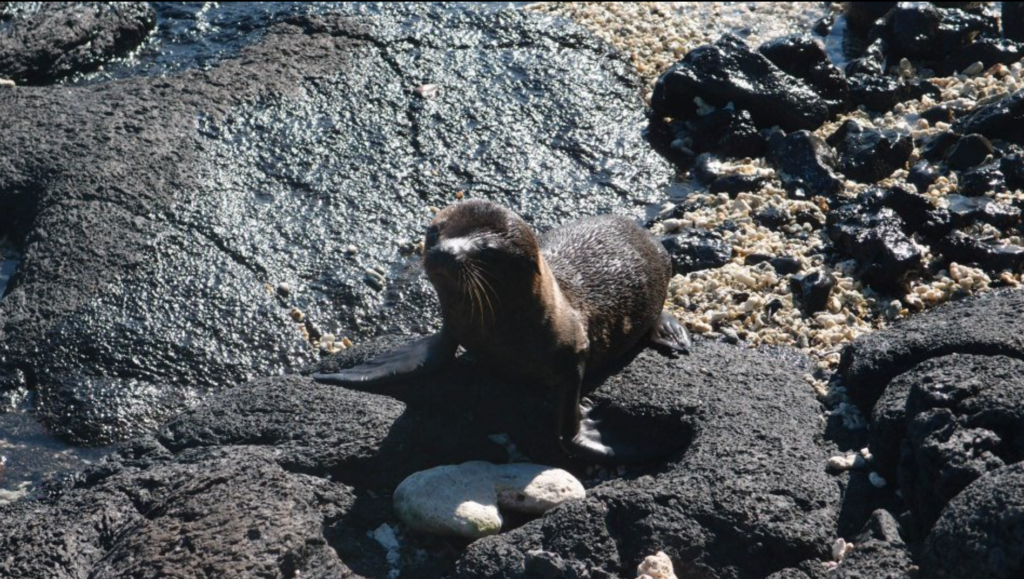
In the afternoon we go snorkeling, relax and watch the sunset. As the sun dims, we return to the lodge to have dinner and an early night.
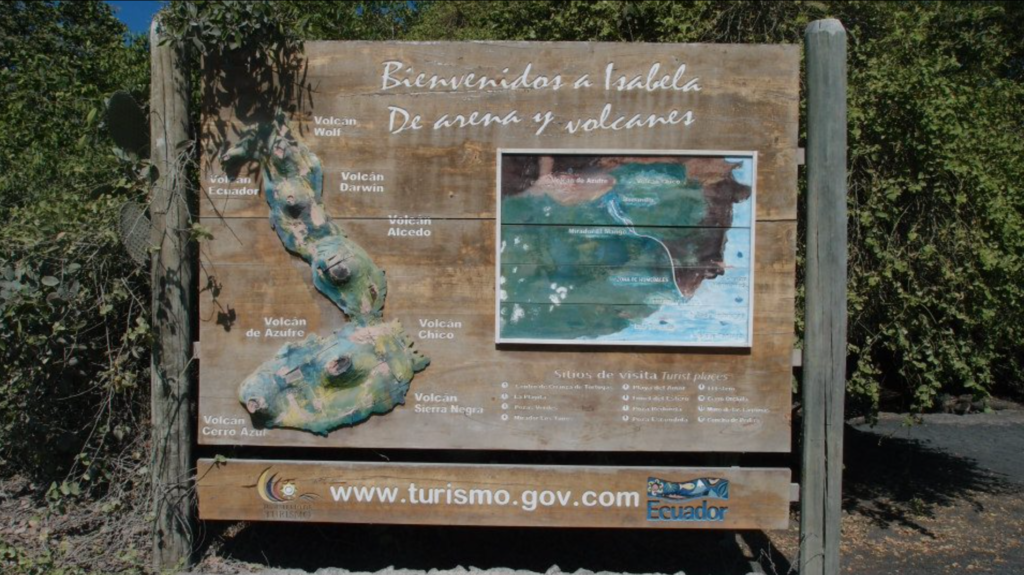
The next day, we have booked a full day Sierra Negra volcano hike. Sierra Negara is one of the six volcanoes that form Isabela island, it is also the most active one. Viator offers this day tour that includes packed lunch and private transport to the beginning of the trail. This is a 10-mile (15 km) hike on rocky terrain that takes us through some of the best flora and fauna that the Galapagos has to offer.
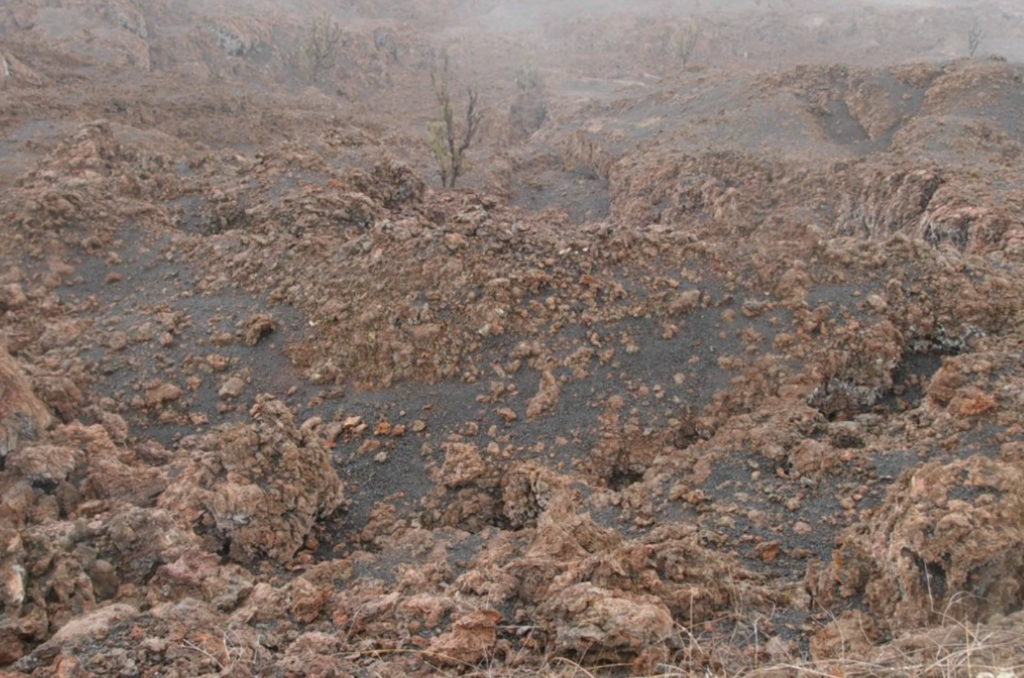
Sierra Negra offers an amazing experience as we hike along its enormous caldera and enjoy beautiful landscapes across a color-filled volcanic terrain. Sierra Negra is also home to Galapagos famous native fauna and flora.
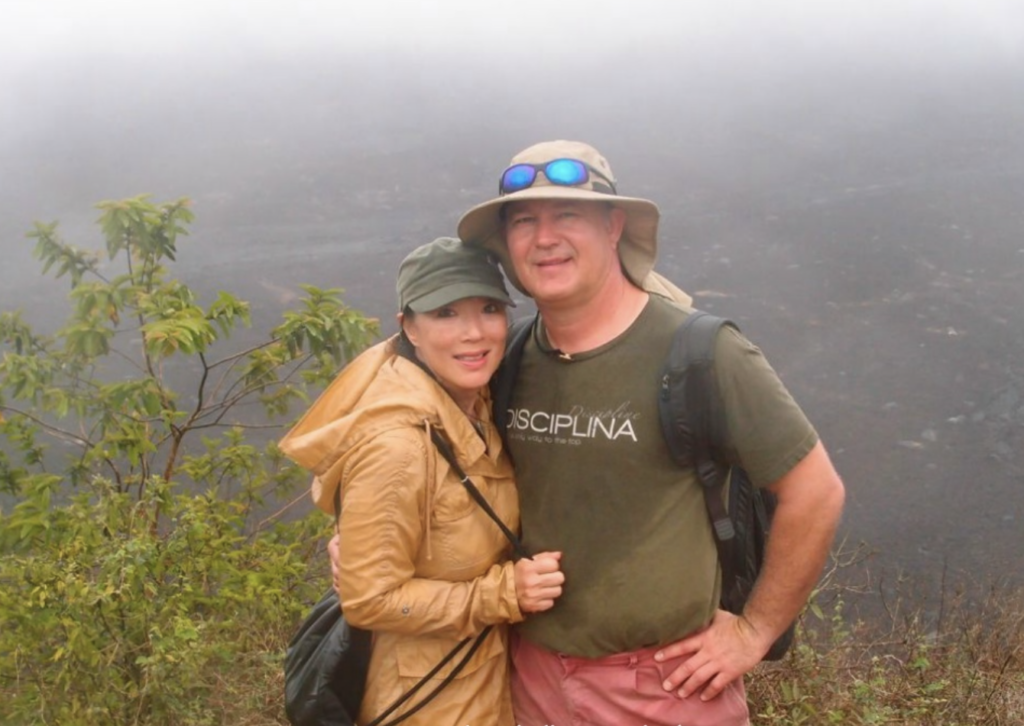
It’s raining quite heavily and the rocky terrain is very slippery…
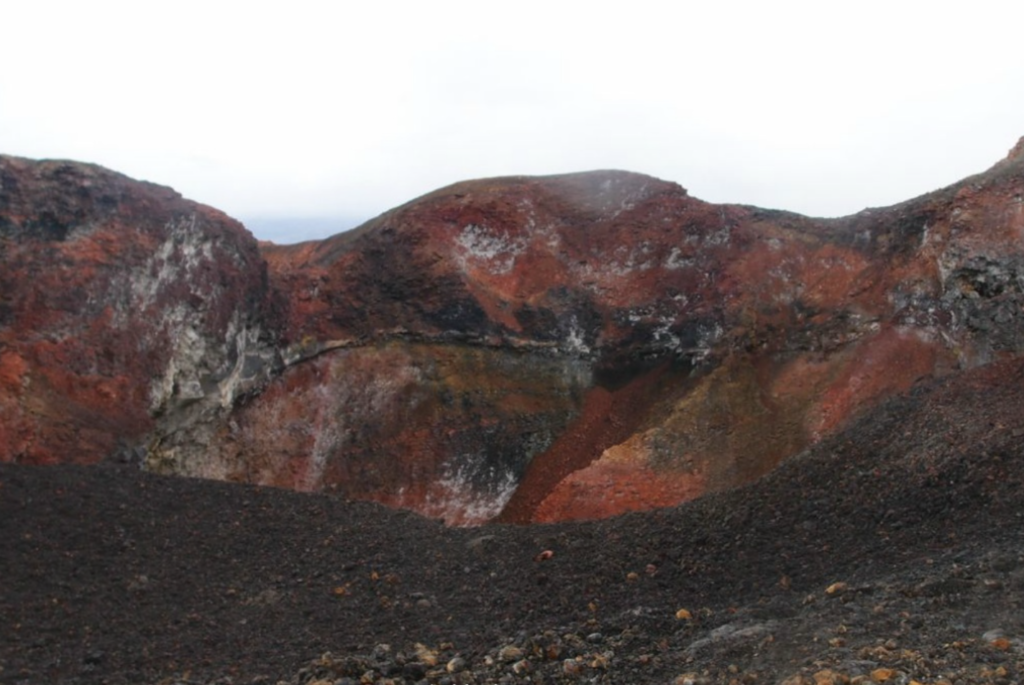
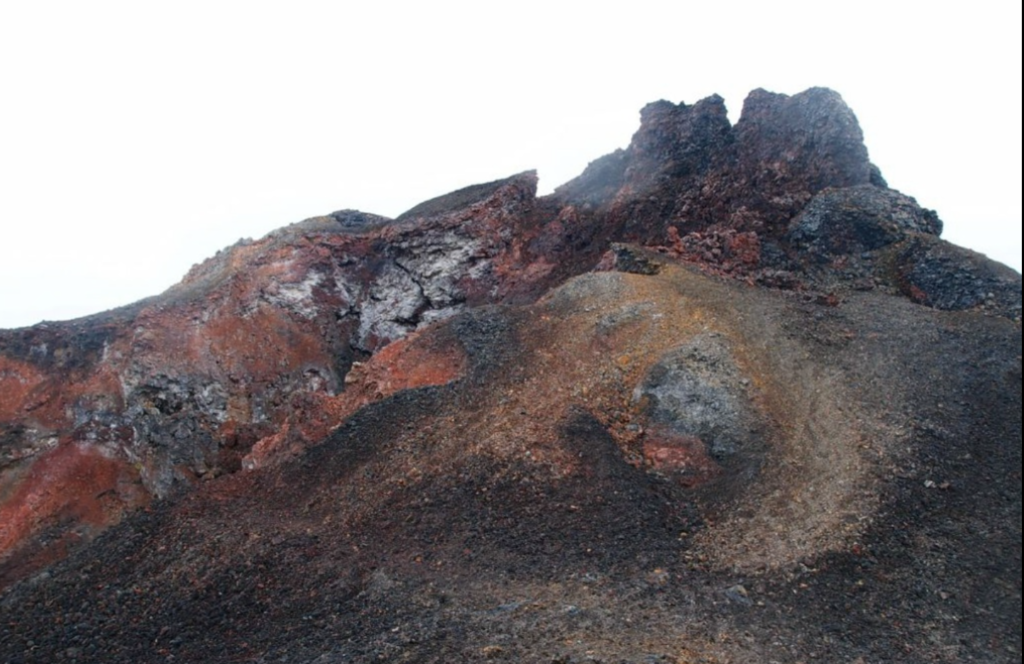
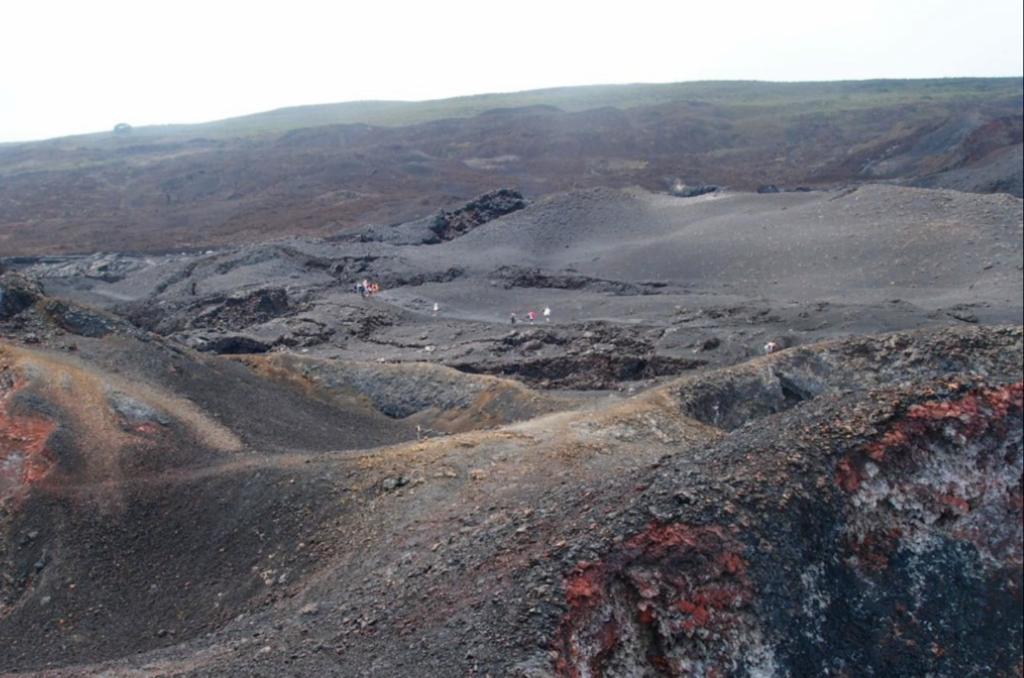
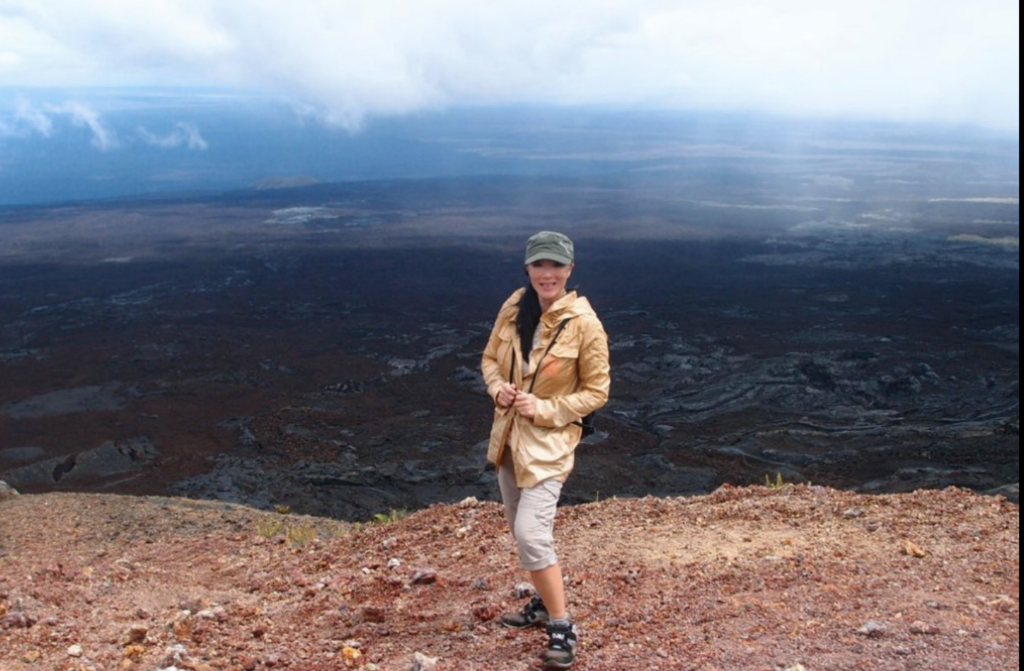
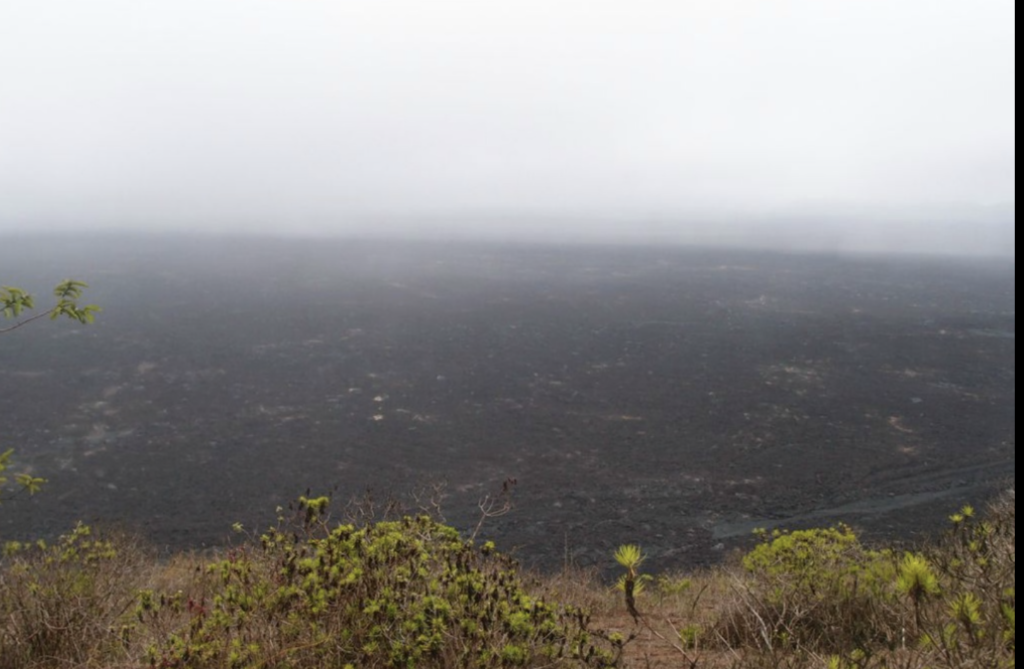
We enjoy a late lunch near El Mirador del Mango which is located 9km from Puerto Villamil. .
This place was a former gravel mine that was used for the construction of the highways and roads of Isabela.
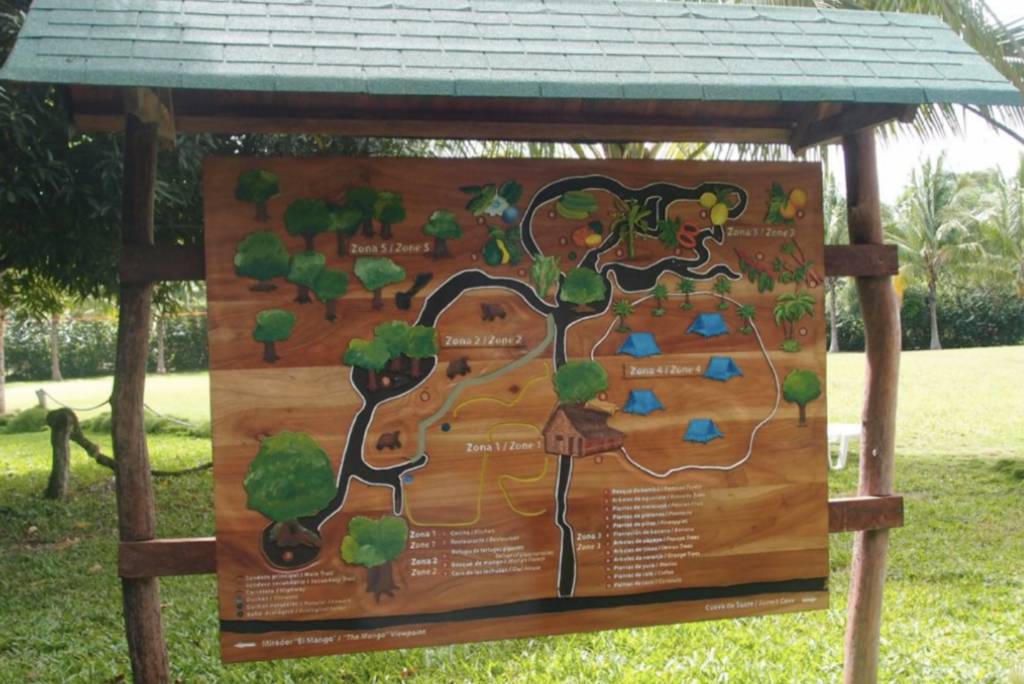
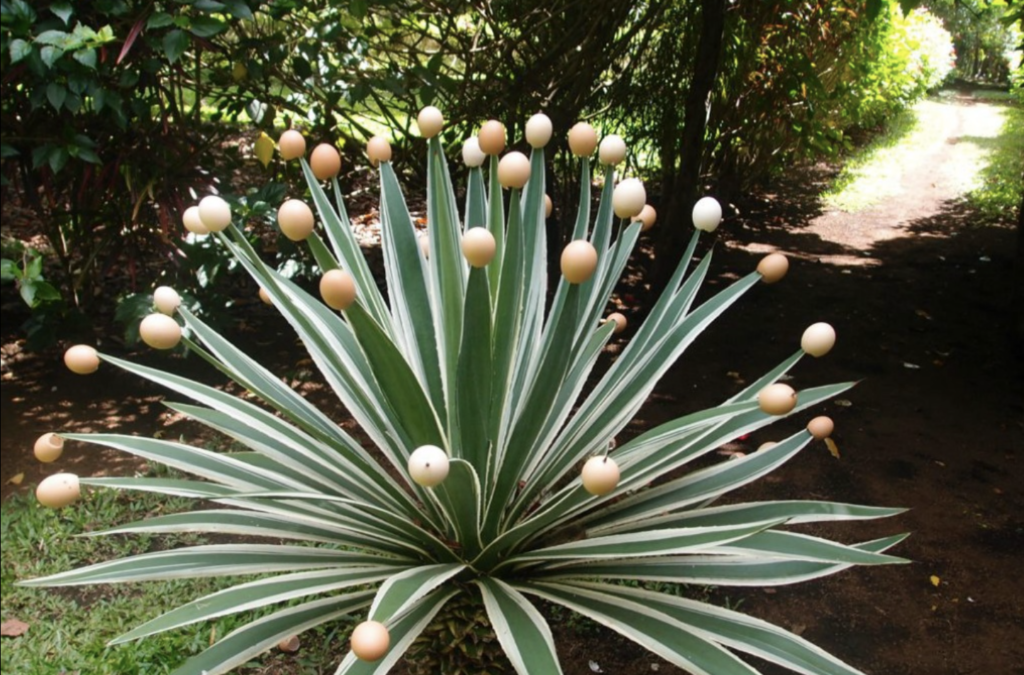
Relaxing lunch in the midst of lush vegetation.
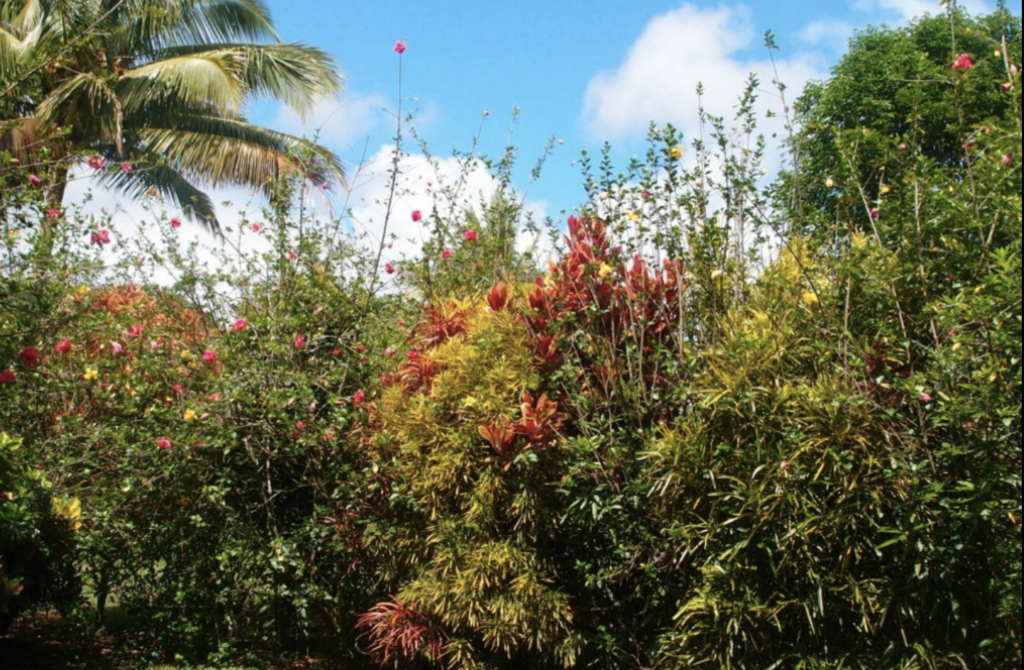
After lunch, we take the trail to the Centro de Crianza “Arnaldo Tupiza Chamaidan”
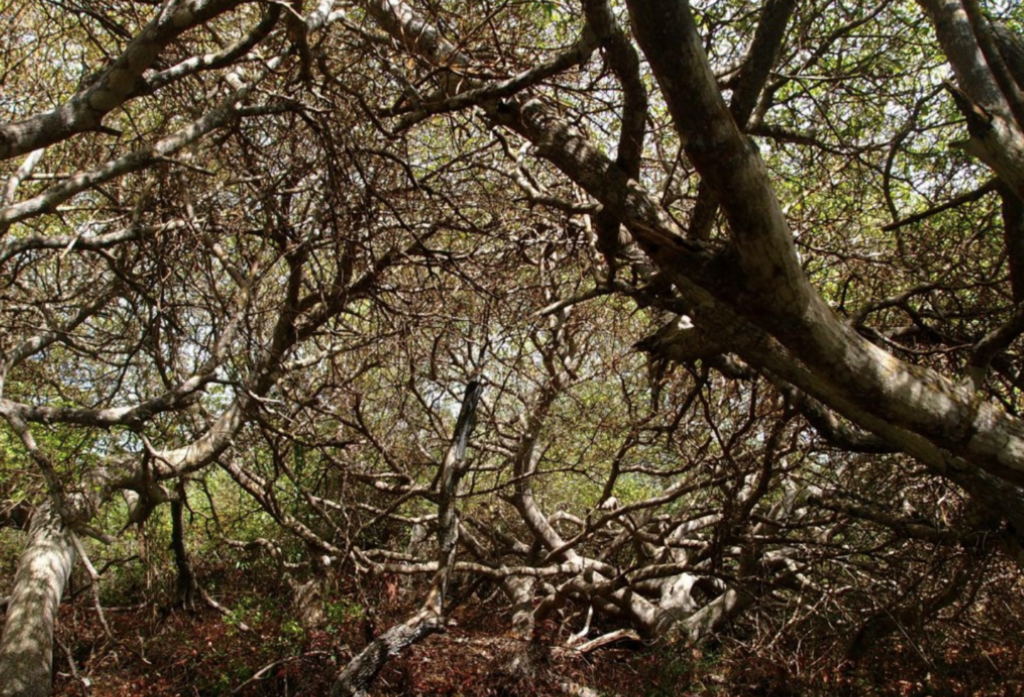
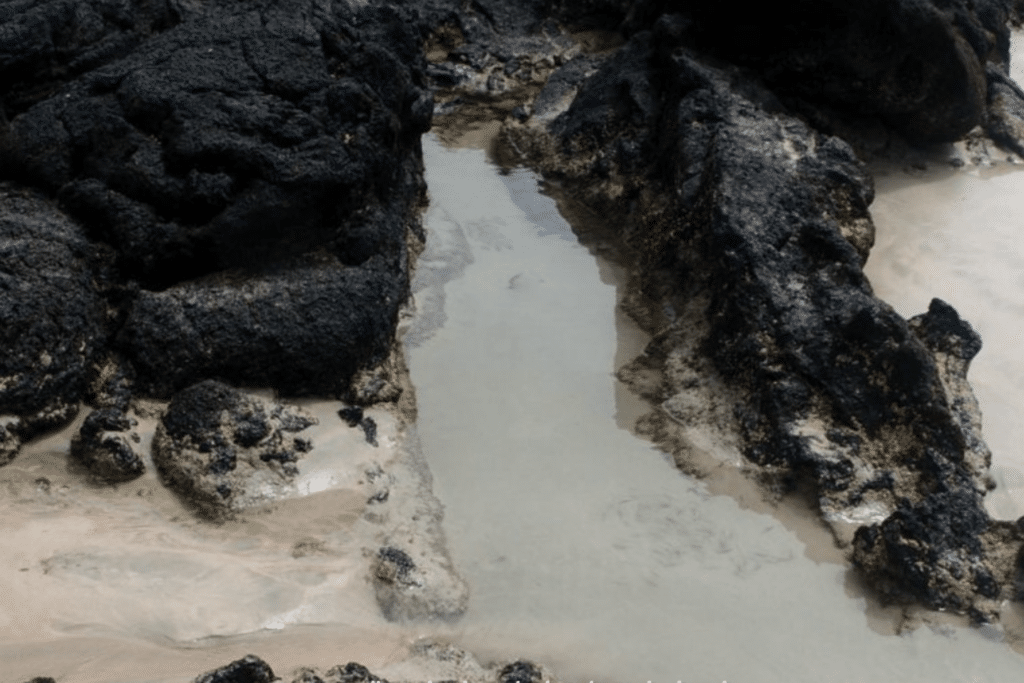
We walk back to the lodge via the beach
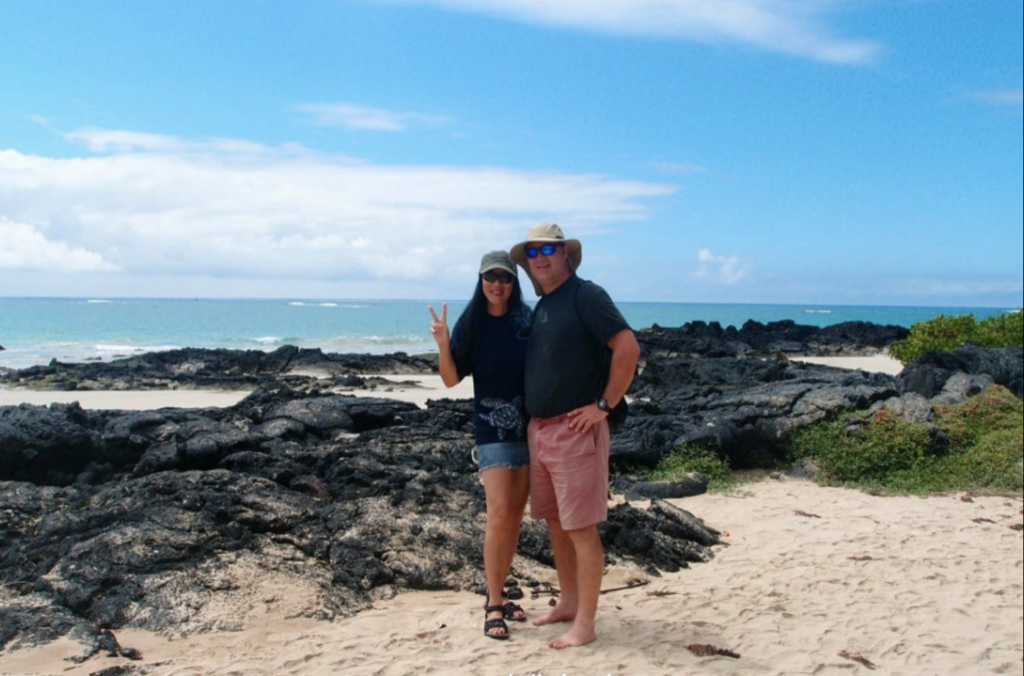
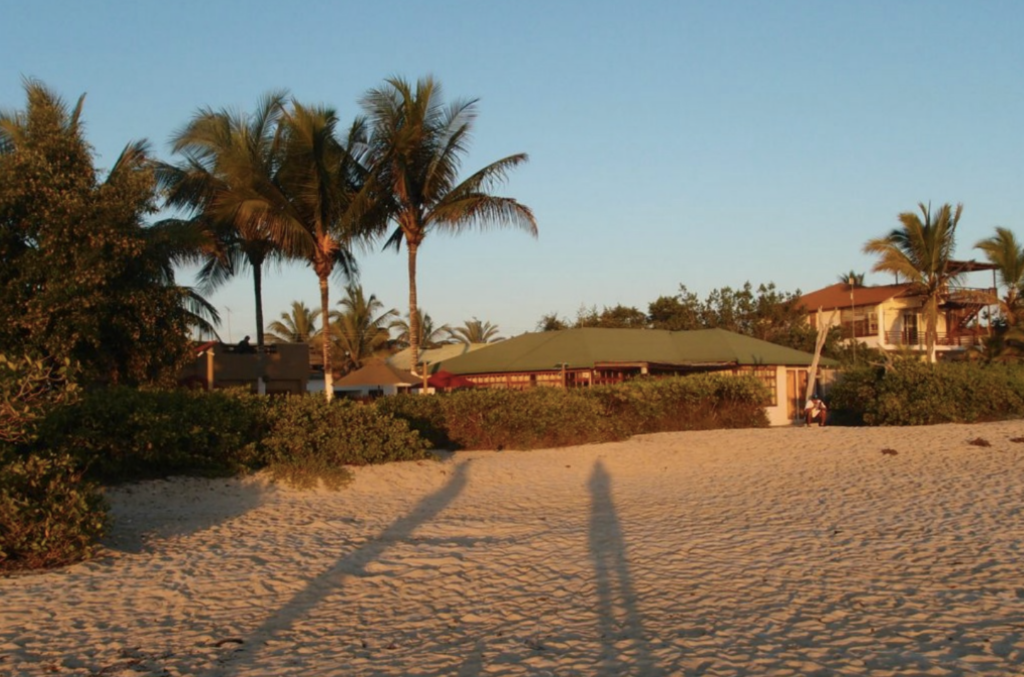
After dinner, we enjoy a nice evening on the beach by the Red Mangrove lodge.
Isabela – Santa Cruz
This morning starts with a 6:30 AM wakeup call to tour the “Humedales,” these are the island’s wetlands. On the way, we enjoy views of the stunning Villami beach, rich with palm trees and sparkling sand. Our hike begins up Cerro Orchilla, providing a dramatic island viewpoint. We continue to the memorable “Muro de las Lagrimas” (Wall of Tears). This structure was erected by some of the earliest prisoners kept on the island. The setting is scattered with native flora, frequented by Darwin finches, and home to lava lizards.
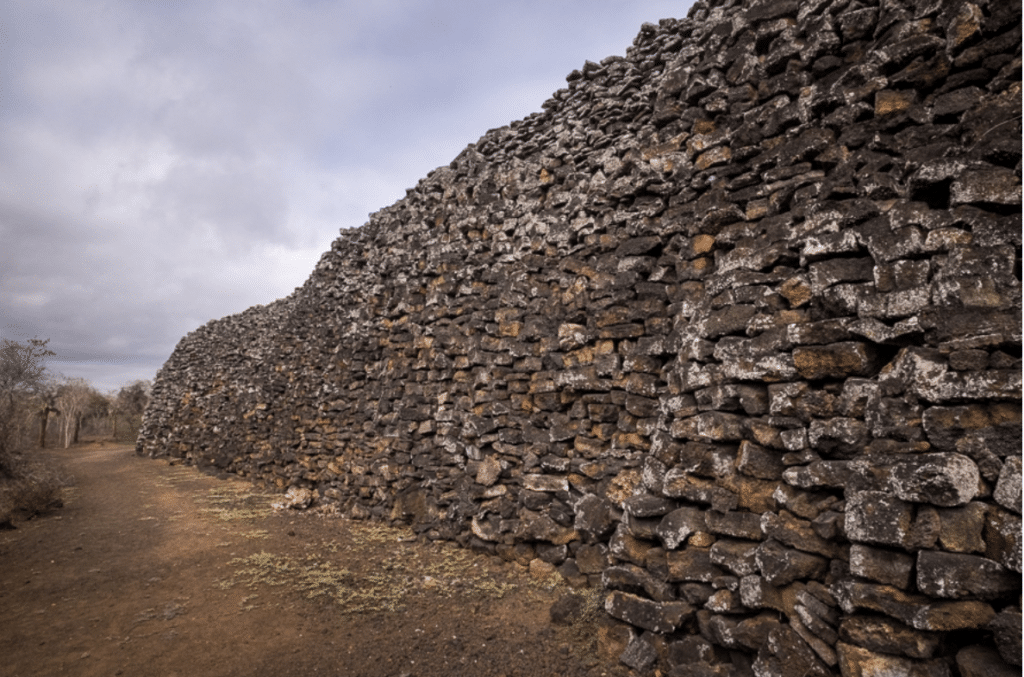
We return to the lodge for lunch, then board our boat to travel to Santa Cruz Island.
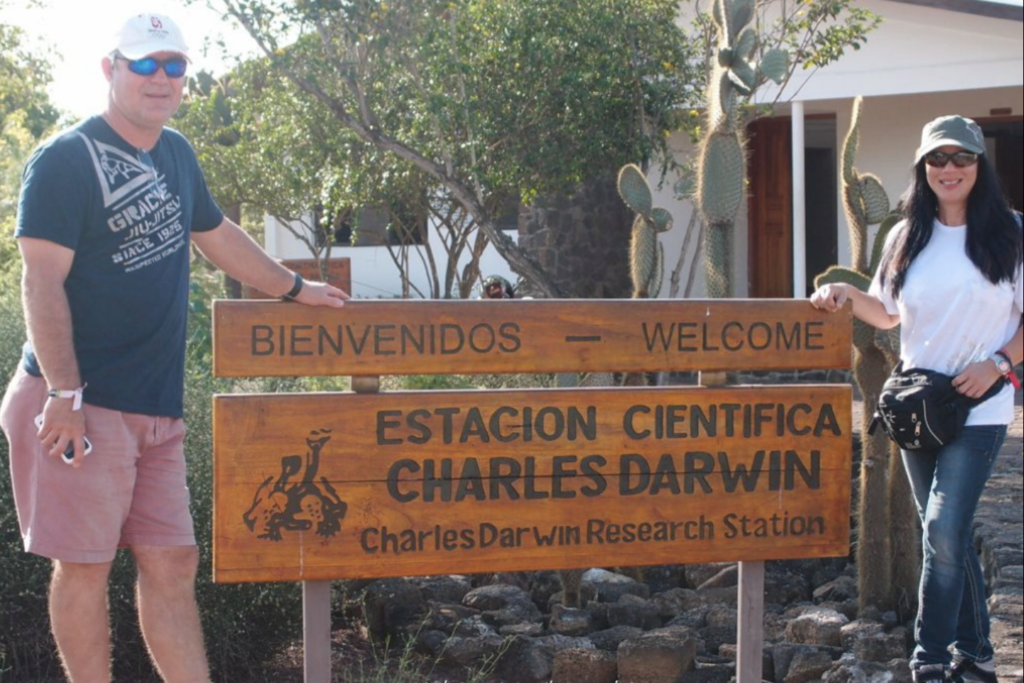
Arriving about one and a half hours later, we visit the impressive Charles Darwin Research Station for a guided tour. Their reptile-breeding program is immense. When Charles Darwin visited these islands in 1835 he met English Vice-Governor, Nicholas Lawson, who mentioned to him that he could, “on seeing a tortoise, pronounce with certainty from which island it has been brought.”
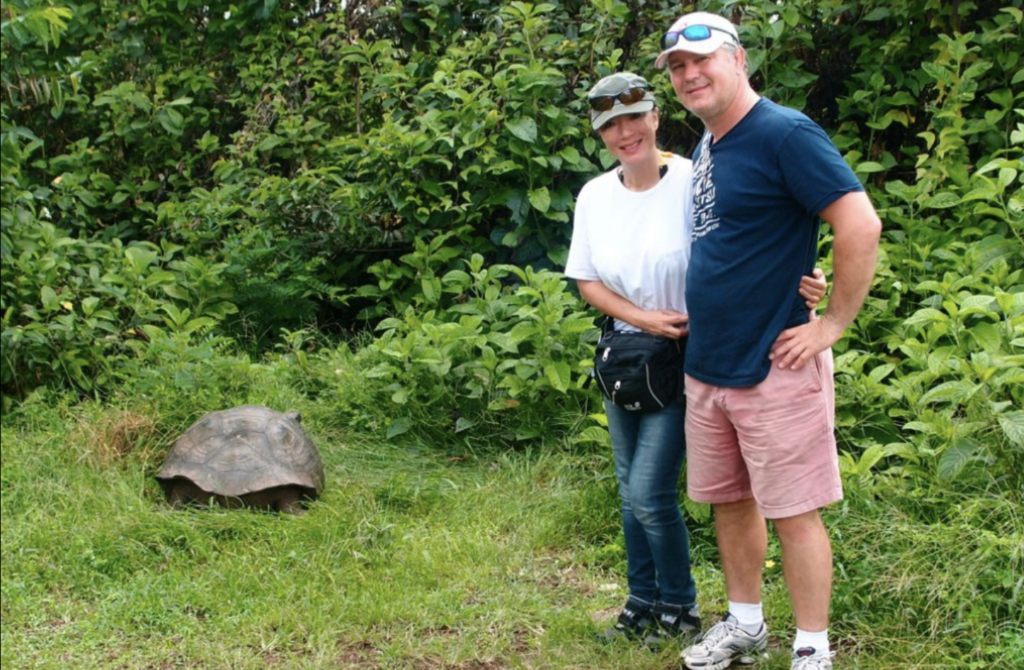
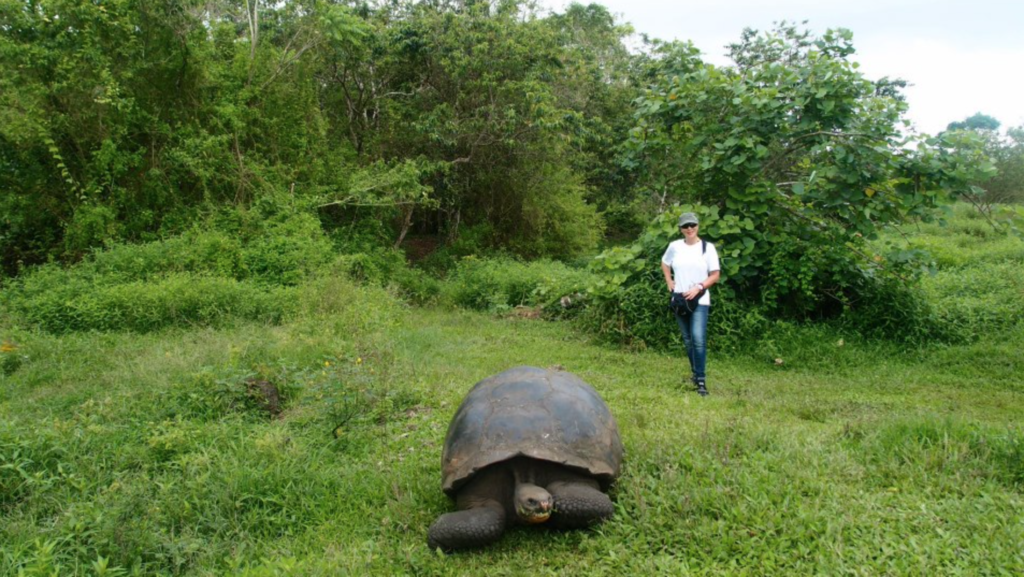
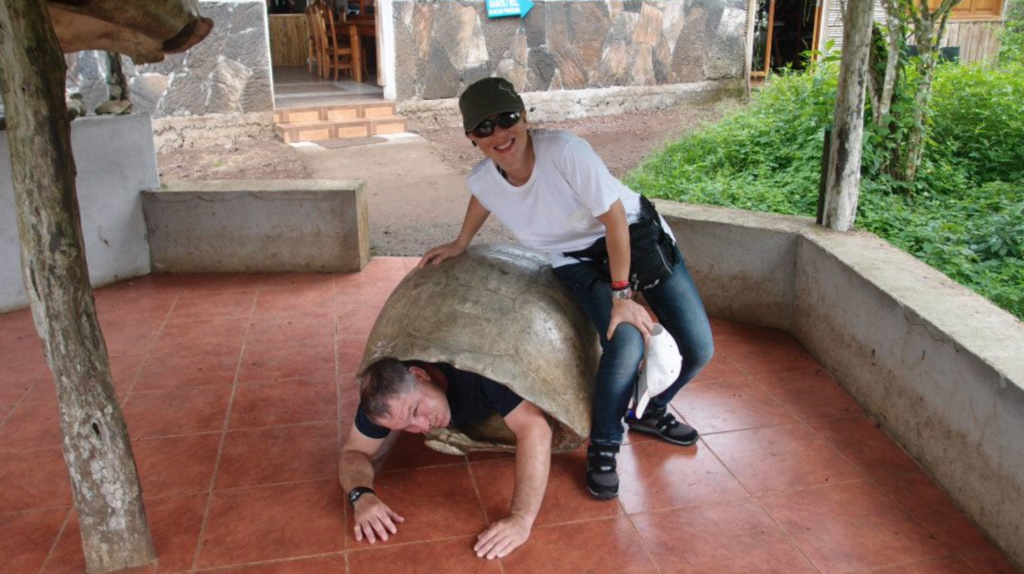
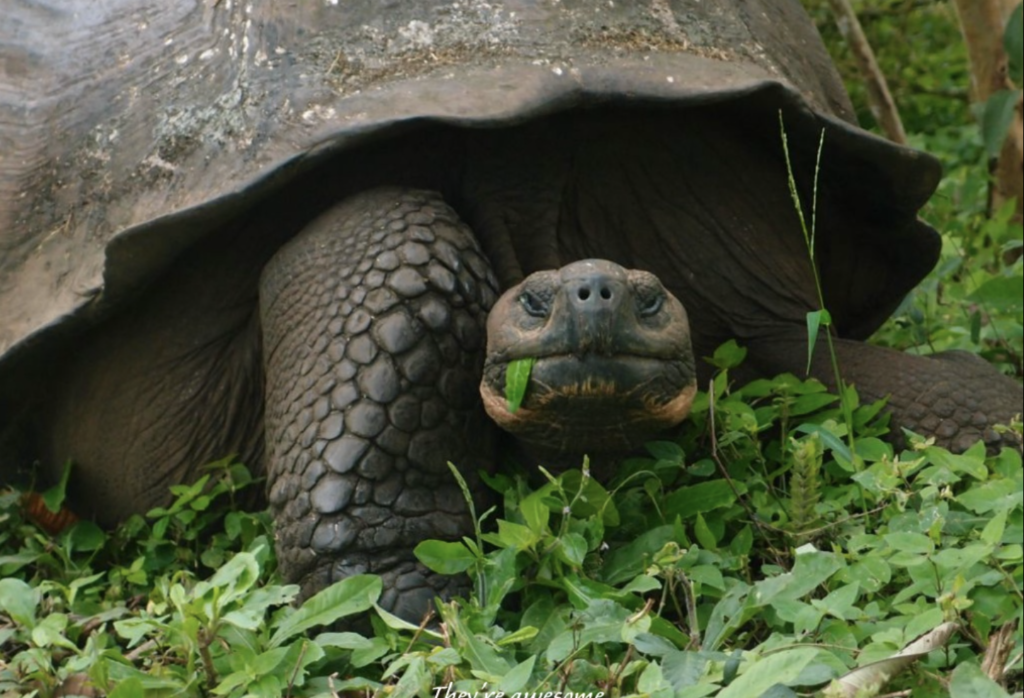
The Charles Darwin Research Center revolves around understanding and protecting these unique islands and has grown from its origin in 1964 to include over 100 scientists around the world.
Local food in Santa Cruz
On our last evening, we are strolling in Puerto Ayora and are first attracted by the salsa music from a boombox coming from the fishing pier.
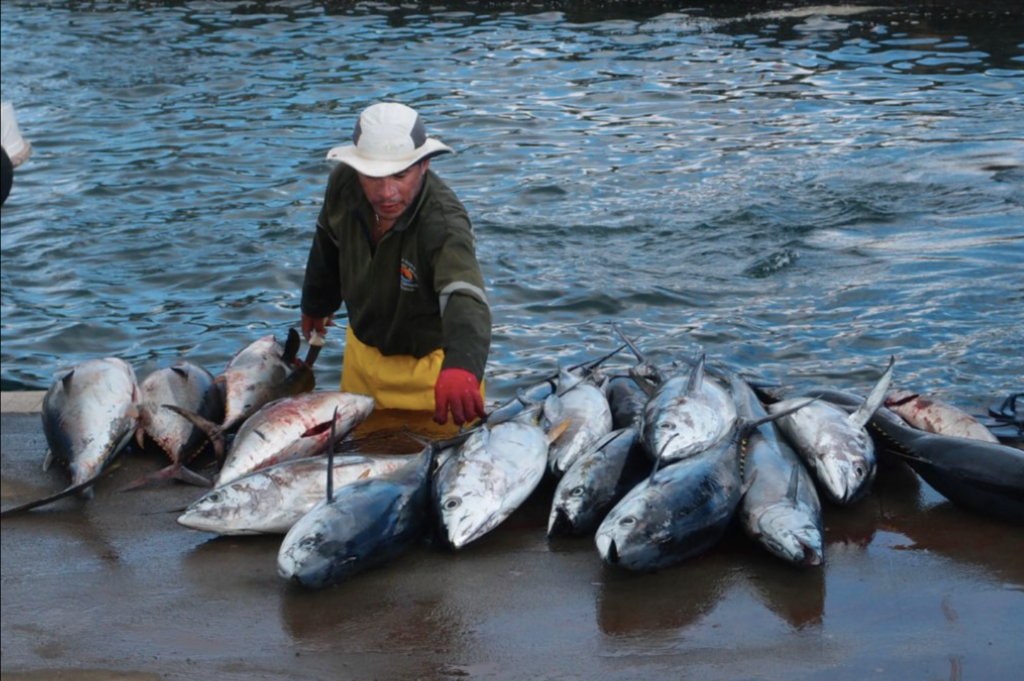
We decide to join the locals enjoying fresh seafood in an outdoor area and order fried fish from a food stall.
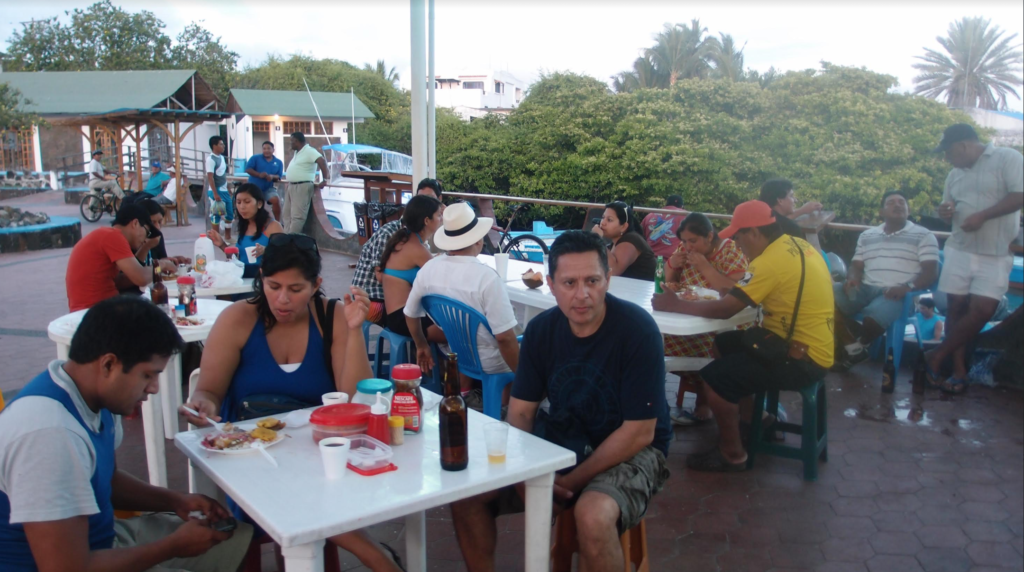
The fish is prepared on the spot with fresh ingredients
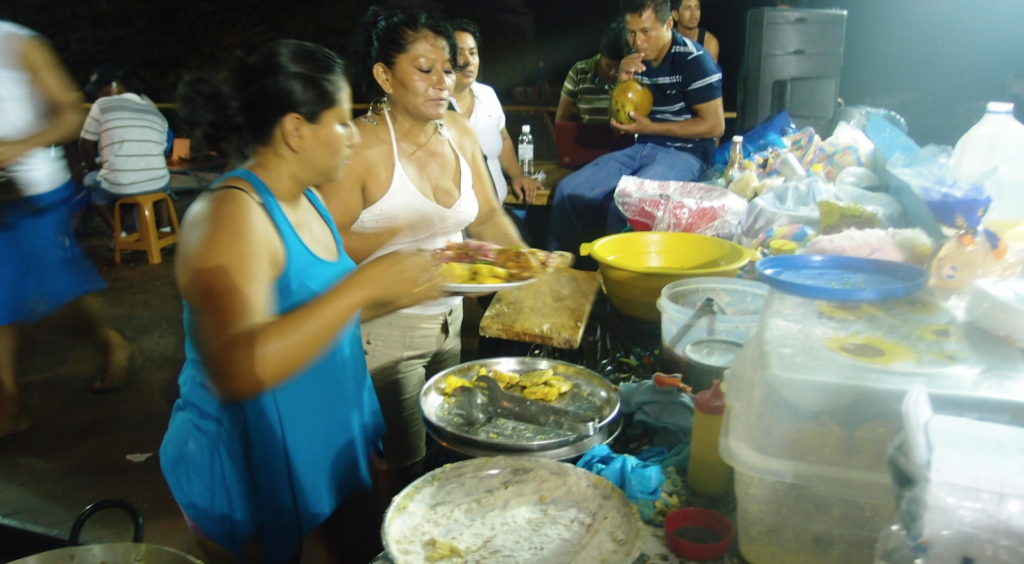
The simple meal turns out to be the best meal we have enjoyed in the Galapagos! Read about our local food experience featured by CNN Travel below…

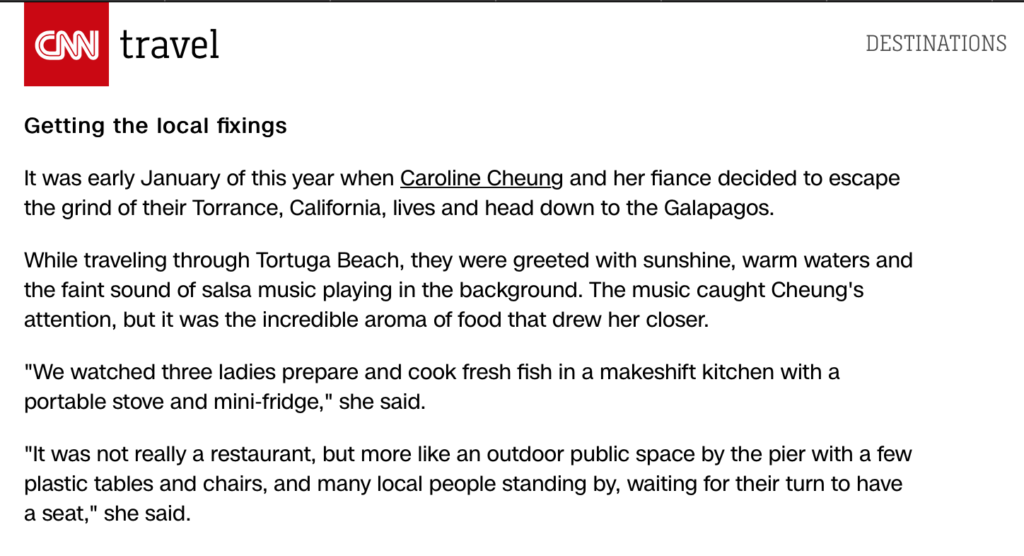
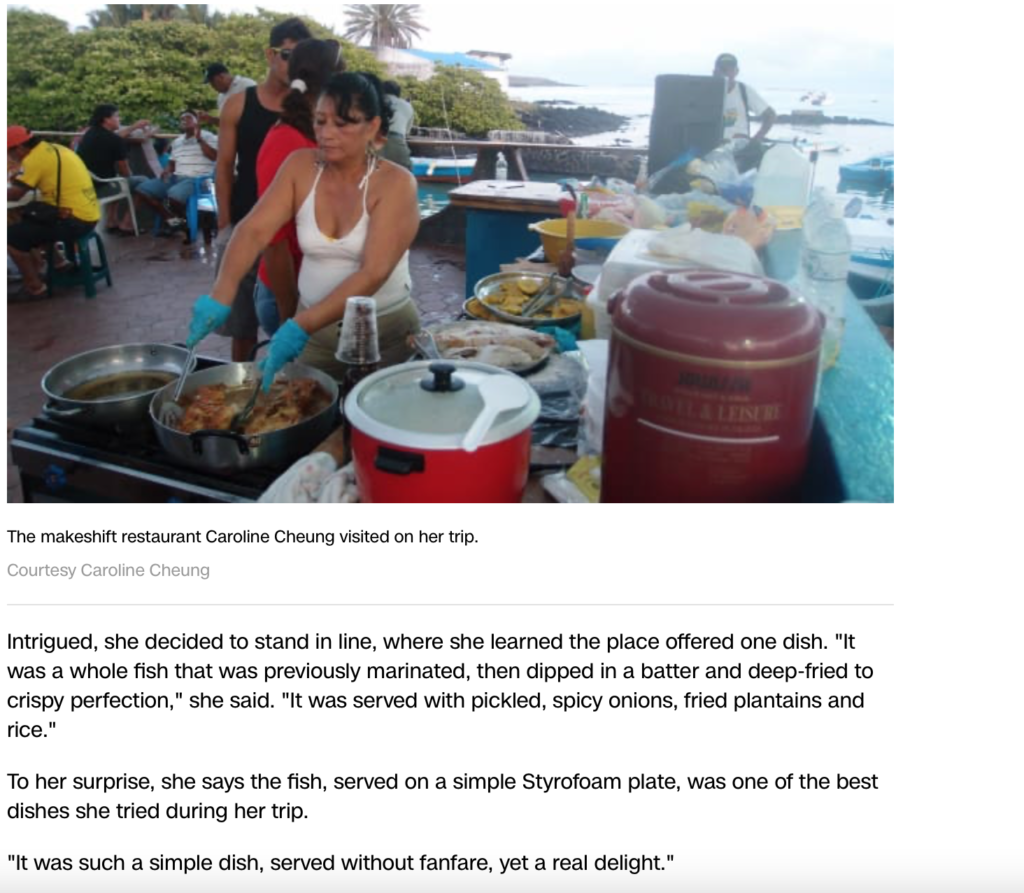
Santa Cruz – Quito
After a hearty breakfast at the lodge, we make our way back to Baltra’s airport for transfer back to the mainland of Ecuador. The Galapagos have been for us a trip of a lifetime…
Read about our stop over in Quito here, and the most interesting places to visit…
We hope you love the products we recommend. Just so you know we may collect a compensation from the affiliate links on this page if you decide to shop from them, at no extra cost to you. Thank you for your support.

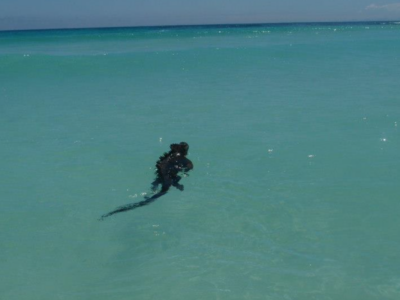
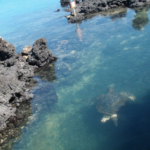





















 Beef Wellington
Beef Wellington
trip of a lifetime!